#Revised History of the DCU
Explore tagged Tumblr posts
Text
So I recently had the thought that Superman as depicted in the DCAU canon probably has the best-articulated-by-the-narrative and most-consistent character flaws of any Superman I’ve seen, in a way that’s enabled by the long-formedness and consistent creative vision of the series.
He’s got an Atlas complex that grinds the gears of his equally-durable, equally-capable colleagues in the Justice League. He has deep-seated fears of moving the wrong way and breaking something or someone, which is then upstream of some moderate control issues. He’s got anger problems, although it’s rare for someone to push him far enough that this takes center stage; you see this with Prof. Hamilton in the series finale of STAS, but also in a number of fights against opponents strong enough that he starts getting frustrated. When the stakes are lower, he can be cocky bordering on genuinely vindictive; there are lots of examples of him rubbing his opponents' noses in it when he finally gets them on the back foot, and it’s shown in flashbacks that he was genuinely kind of a dick when he was a teenager and hadn’t completely sorted out what proportional responses looked like. He doesn’t always think through the implications of his grand projects, be that the implicit threat-escalation posed by the expanded JLU, or the massive disarmament project he spearheaded that turned out to be part of an alien invasion scheme. There are probably more of these that I’m forgetting. The final roundup here is that he’s a good guy. He’s far and away from a perfect guy, with perfect judgement. All of this amounts to something that’s more coherent and specific than the contradictory, subject-to-eternal-revision mess you could assemble from his 60-something year publication history in the comics, but nonetheless with a substantial-enough runtime that all of these traits can be put on display again and again.
In turn, this allowed the collective DCAU continuity to get away with at least three “what if Superman went rogue” plots- four if you count the mind-control situation in Legacy- specifically because they did the legwork to establish the concrete neuroses and psychological vulnerabilities that might cause this specific version of Superman to go rogue. It was never completely insane that Luthor might figure out the exact set of words, actions, and personal losses necessary to coax this depiction of Superman into an authoritarian partnership for the supposed greater good. It’s not completely insane that this depiction of Superman, if pushed far enough, might lose faith in the collective judgement of humanity and decide to put the world and all his loved ones in a bottle. And when the Cadmus plot rolls around in JLU, it’s as effective as it is because they’ve already advanced two roads-not-taken, established what levers you need to pull to make this specific version of this guy cross the line, and that Cadmus and Luthor are pulling all of them.
I emphasize the specificity here, because the flipside of this are Superman-gone-rogue narratives that jump right to that as the cornerstone of the continuity, with no real opportunities for juxtaposition. A major issue I eventually developed with the Injustice franchise is that despite its pretenses of being an alternate universe, there’s no established continuity that it’s deviating from, bar its own. To some extent I feel as though it’s banking on the audience transposing their gestalt-understanding of Superman and the broader DCU- hell, their understanding of the Justice Lords arc in particular- in order to elide that they’re playing extremely fast-and-loose with the specifics of what has and hasn’t happened to Superman in this continuity. The DCEU is a runner-up- jumping right to the Damocles-sword of a bad-future after two movies is jumping the gun, in the same way everything about the 2010s DCEU was jumping the gun. I think you could plausibly attack TDKR’s portrayal of Superman under this logic, although I personally wouldn’t- but that’s its own post.
Point being that you can’t sell me the upset of a paradigm if you never established it-you need to set up the pins before you can bowl worth a damn.
#superman#DCAU#justice league#justice league unlimited#superman the animated series#stas#thoughts#meta#effortpost
369 notes
·
View notes
Text
Random Thought
@davidmann95 gave me permission to RB his thoughts on my Revised History of Krypton portion of my Revised History of the DCU headcanon thingummy, so here goes...
I just finally got around to it, and I liked it! Some stuff I would’ve done differently - I’m not sure on the infertility plot - but you do a better job than pretty much any of the actual comics framing Krypton as a world with a distinct culture and history and founding sins, and merging the Silver Age and modern stuff without making it a soulless ‘something for everyone!’ mish-mash.
He likes it! Woo!
(I was tempted to ask his opinion on the rest of it, but that felt greedy)
2 notes
·
View notes
Text
The Unbearable Whiteness of (Comics) Beings
An excellent thread by Gene Demby, correspondent and co-host of NPR’s Code Switch podcast, on the deeply embedded whiteness of Marvel and DC comics characters.
From Droll Embiid.@GeeDee215:
A quick thing about Isaiah on The Falcon and The Winter Soldier.
About a decade ago, I interviewed Robert Morales, who invented that character for Marvel in 2001. The result was "Truth: Red, White, And Black" which recast the story of Captain America's origins as part of a Tuskegee Syphillis Study-like plot.
In Robert's story, the US rounded up hundreds of Black GIs in a segregated battalion during WWII to use as guinea pigs. The US is trying to re-create the procedure used to turn Steve Rogers into Cap.
They get it wrong — a lot. Almost all of the Black men they round up die.
Only five of the 300 Black men subjected to the super-soldier experiments survive the process; of that five, Isaiah is the only Black super-soldier who survives the war, and he is thrown in prison for decades.
"It was so depressing I didn't think they would approve it," Robert told me. ""But it was depressingly realistic. And *likely.*
"Robert died in 2013. But his revision of the Cap story was part of a wider on-page reckoning w/ the whiteness of the stories in the mainline MCU/DCU.
The Kents of Smallville, as one example, were reimagined as radical abolitionists — Free-Staters who settled in Kansas to oppose the state from becoming a slave state. Clark Kent, then, would be directly downstream from the principles of his forebears.
It's a very liberal inclination — positioning the Kents on the side of justice for a century-plus before the space-ship landed on their farm.
but it skips over some bigger, more important question about race and power: like how is it that whiteness was literally so universal that both a Kansan *and* a Kryptonian might possess it?
Much more under the cut.
Black mainline comics writers kept playing with these premises. The legendary Dwayne McDuffie, wrote his Black superman analogue Icon as having become Black upon imprinting on the enslaved Black woman in the American south who found and adopted it.*
*why this character was still -male- is...yeah.
anyway, a lot of mainstream superheroes, in their reimaginings, have to nod to the oppression in this country. (There was an aside in one of the Nolan Batman jawns that positioned the Batcave as originally a hideout the Waynes used for fugitives on the Underground Railroad.)
And i think that speaks to how deeply embedded the whiteness of these characters is.
The Green Lantern's power ring had to scan the earth for the bravest person in a world of billions of people and...decided that its rightful bearer was a white fighter pilot from the Midwest?
anyway, more later!
okay, so young Kal-El rocketed across the cosmos as a baby in a spaceship before crash-landing in a field in Kansas. He was Kryptonian but also, somehow, a white boy. Which brings us back to this question upthread: whiteness could literally span the cosmos?
in those Silver Age days, that's literally how they explained it: he could be a white American because there were white Kryptonians.
This was underscored by the fact that they created distinctly *Black* Kryptonians — who lived in a place called Vathlo Island.
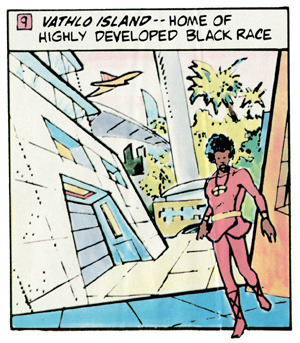
Vathlo Island "retained its independence throughout history and did not join the planetary federation, though good relations were maintained."
Kryptonian Wakanda, I guess.(Yes, I know i'm mixing universes to make that metaphor work. calm down, nerds.)
Not long after that first (and one of the only) references to Vathlo Island in 1971, Neal Adams, a white artist at DC, asked his editor a q: what happens if Hal Jordan — the Green Lantern — dies? The editor told him that there would then be a backup Lantern.
The backup Green Lantern they had in mind was a white gym teacher who used to play Big 10 football.
Again: the bravest person in the world was a white USian dude.
Adams eventually pushed back, and along w/ Dennis O'Neil, created a Black character to take over the GL mantle: an ex-Marine named John Stewart.

(Adams told me his editor originally wanted to name the character Lincoln Washington, but he talked him out of it. Phew.)
Again, y'all see the problems here — the bravest person in the world is still a male, a USian and a member of the US, military? — but as representation went, Stewart was better than a lot of the other Black superheroes that DC tried their hands at.
In the 70s, DC created Black Lightning (who was black and electrical), Black Goliath (black and a giant), and Nubia ( black...and Wonder Woman). And at Marvel there was Luke Cage, who, in his earliest pre-dab incarnations, was a jive-talking powerhouse in butterfly collars.
Anyway, the upshot here is that John Stewart taking over the Green Lantern mantle...stuck with Dwayne McDuffie, who created the Milestone comics imprint under DC in the 1990s, featuring all characters of color.
(Milestone's Superman analogue, Icon, mentioned upthread, became a way to embody and critique a certain kind of ascendent respectability politics; he was, after all, essentially a Black cop. Milestone was already playing with chewier ideas around race than mainline DC.)
McDuffie would eventually become a the principal player in the DC Animated Universe. When they were creating the Justice League animated series, underlined that there way that the show could have a team in which everyone — even the aliens Kal-El and Hawkgirl! — were white.so instead of Hal Jordan, the original Green Lantern, taking his traditional place as at the Justice League table , the animated series launched with John Stewart in that role.
The show debuted in 2001 and became a huge hit. McDuffie often pointed out that, as a result, a generation of younger fans who were introduced to the character through the animated series had only ever known a Black Green Lantern.
(There were a lot of reasons the 2011 Ryan Reynolds Green Lantern movie failed, and the "who tf is THIS guy?" factor probably played some role in it.)
There's a lot more, obviously. But some of these IPs — Batman and Superman and Captain America, in particular — are 80+ years old. They're holdovers from a pre-Civil Rights Act America, a pre-Stonewall America, etc. They represent a bunch of stuff that is ever harder to update.
And it will be interesting to watch how that chafes against the the fact that they are more valuable and popular than they've ever been. Could a critique of the premises of the Cap origin story, like Robert Morales', even happen today?
22 notes
·
View notes
Note
For definitely no reason whatsoever, in response to nothing specific, can you rank the DC Multiverse Earths and tell us a bit about why each is in its place on the list?
Were this in response to an article, I could assure that I generally enjoy the writer’s output perfectly well from what I’ve seen and was absolutely baffled by the bizarrely selective research that went into it. Anyway, I hope you feel guilty enabling the amount of work I put into this truly ridiculous task by the end.

Cliff notes for the relatively uninitiated: that gorgeous monstrosity up above is The Map Of The Multiverse from the miniseries Multiversity, presented as a series of concentric circles bordered by the ‘Overvoid’ that all of reality is suspended in (and framed in such a way as to make clear it is the white of the pages comics are printed on). You go inwards from the borders of creation - moving moreso with each sphere from abstraction to the realm of the physical - to the Monitor Sphere in which once lived the near-omnipotent, now nearly extinct Monitor race that observed and maintained the multiverse, into the Sphere of Gods where the various beings of myth and divinity dwell, and into the innermost sphere where ‘we’ live. The 52 Earths you see within aren’t the whole of the multiverse but the ‘local’ 52 worlds, with infinite other Earths dwelling in their own dimensional pockets; all these universes actually exist in the same three-dimensional space at the same time but suspended in a higher-dimensional substance called ‘the Bleed’, and vibrating at distinct frequencies. Also there’s a ‘Dark Multiverse’ that’s cosmologically speaking ‘beneath’ the map, disintegrating half-formed potential realities that new proper universes are culled from. There’s a lot more to it than even all of that, but that’s enough to explain what’s up with these.
My ranking here is obviously subjective, but mostly comes down to a mix of ‘how cool is this Earth’, ‘how much would this Earth be worth using again’, ‘how well does it work in the context of being part of a shared multiverse’, and ‘do I seriously see creators unearthing any of this Earth’s potential down the road’. Also, Earths 24, 27, 28, 46, and 49 aren’t here, as they’re among the 7 Unknown Earths on the map that were left behind for future creators to define; 14 and apparently 25 have since been revealed.
64. Earth 14

A worthy bottom-place entry, Earth 14 is at the top of the Multiverse Map, and is shown as physically different from the other Earths, seemingly vibrating as if in two places at once; map co-designer and illustrator Rian Hughes suggested in an interview the intent was that this was where new universes entered the multiverse. Instead, ending up the first Unknown Earth to be revealed after the doors were opened to other creative teams, it was shown as a generic dystopian world home to a ‘Justice League of Assassins’ that were quickly dispatched by a generic cosmic threat. A monumental tribute to contextual ignorance and creative laziness.
63. Flashpoint
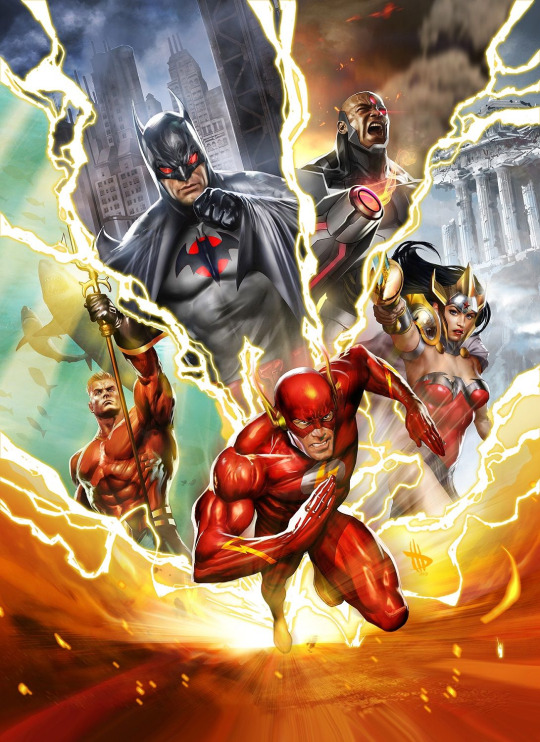
This is one of several Earths I’ll touch on that exist in neither the ‘local’ nor Dark Multiverse, but has directly crossed over or been framed in reference to the currently operating version of the DC Universe and so is probably worth a mention even if I’m not going over every Elseworlds and Imaginary Story DC has ever published. Another dystopian world, in this one an attempt by The Flash at fixing a change to history resulted in an Earth torn apart by war between Aquaman and Wonder Woman, where Cyborg was America’s greatest hero and Kal-El was held captive his entire life in a military bunker rather than becoming Superman. Aside from the prospect of a Thomas Wayne who became Batman when Bruce was gunned down as a child rather than vice-versa - resulting in him being pulled into a recent Batman run after this worlds’ destruction, the reason for this Earth’s inclusion - absolutely nothing of value came of this or the stories tied into it, such that astonishingly in spite of being the impetus for one of the biggest DC reboots of all time with theoretically an entire revised history to play with, essentially no one cares about this anymore.
62. Earth 1

The site of DC’s standalone, bookstore-market oriented ‘Earth One’ graphic novels. The incredible tunnel vision of marketing these for that purpose with titles that exist in reference to their multiversal structure aside, the Green Lantern book is the only one of those I’ve heard about being even kind of good; the rest top out at an interesting failure in Wonder Woman, with a standard forgettable failure in Teen Titans and truly flabbergasting misfires in Superman and Batman. Even Multiverse Map co-designer and writer Grant Morrison described this Earth in a blurb as having a history ‘in flux’, implicitly permitting the reader to believe it’s something else if they really want to, but as it stands in spite of the theoretical wide-open possibilities the foundations have already been built on salted Earth.
61. Watchmen

Home to the cast of characters of Alan Moore and Dave Gibbons’ seminal miniseries. Crossed over with the DC Universe 30+ year later in Doomsday Clock, which clearly intended to set up this world as one ripe for future stories and development rather than a singular text, but instead misinterpreted, stripmined, and otherwise nuked essentially everything that might have had one interested in exploring it further in the first place (in spite of the source text’s very definitive conclusions to all major narrative threads and characters). The only reason this is not ranked even lower is the possibility that the upcoming, as-yet untitled Watchmen project by Tom King and Jorge Fornes might manage to dredge something out of this.
60. Earth Negative 11

The first of the Dark Multiverse Earths here, a gender-flipped Earth where Bryce Wayne generically altered herself into an Atlantean in order to do battle with Aquawoman and the forces of Atlantis. As the Dark Multiverse worlds we have seen thus far are described as being borne of Bruce Wayne’s fears, it’s odd that as opposed to the ‘want of a nail’ scenarios shown on all others, this includes the additional twist of making Bruce a woman, yet does nothing with that. Anyway, this is a very clear product of the Dark Multiverse’s debut in Dark Nights: Metal wanting an evil Batman to correspond to each member of the Justice League, and it’s the oddest, most perfunctory of the lot.
59. Earth 34
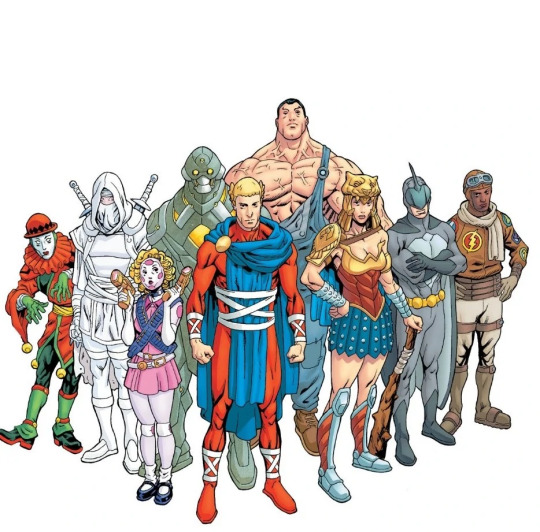
Home to the heroes of the Light Brigade, defenders of Cosmoville, this is an Earth meant to evoke the classic creator-owned superhero comic Astro City. However, as Astro City is itself made up of archetypal signifiers yet isn’t meta about its usage of them, being defined by its storytelling principles rather than the shared universe it builds up in the background, there are essentially no stories to be told here that couldn’t be told with the regular heroes of the DC universe. Which is a shame, those are some neat character designs.
58. Earth Negative 12
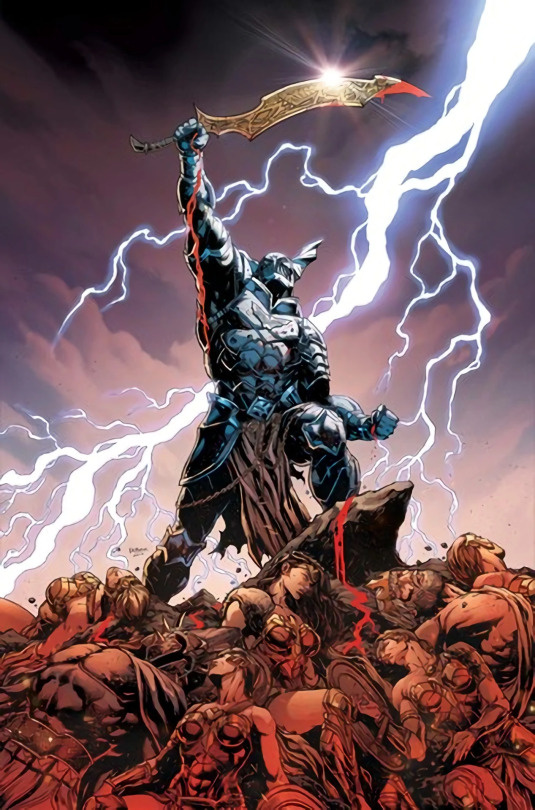
A Dark Multiverse Earth where believing Wonder Woman killed in a battle with the war god Ares, Batman took up the deity’s helm in hopes of redefining war, instead being corrupted by it and becoming an unstoppable monster. There’s basically nothing here.
57. Earth Negative 44

A Dark Multiverse Earth where a computer program meant to replicate Alfred after the butler’s untimely death, attempting to protect its charge, takes control of Batman by way of mechanizing him and turns Gotham into a digital nightmare. A little more on-point than the previous entry, but still not much here.
56. Earth Negative 22
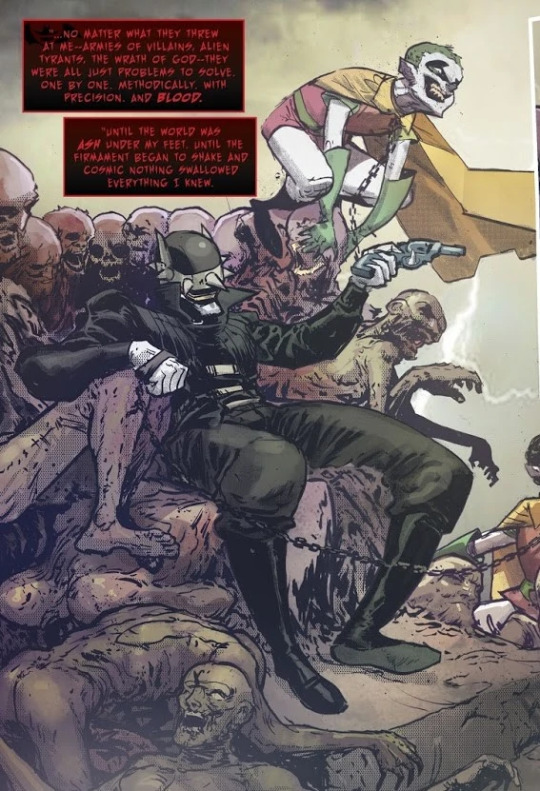
A Dark Multiverse Earth where Batman is finally pushed into killing the Joker, but the Clown Prince of Crime secretes a particularly potent Joker Toxin upon his death that corrupts the Caped Crusader into a second Joker known as The Batman Who Laughs, who slaughters his way across his universe before ultimately making his way to the ‘main’ DCU. The prospect of a Batman/Joker combination is interesting, but an origin for the ultimate corrupted Batman ‘he got drugged into going bad’ falls short.
55. Earth Negative 32
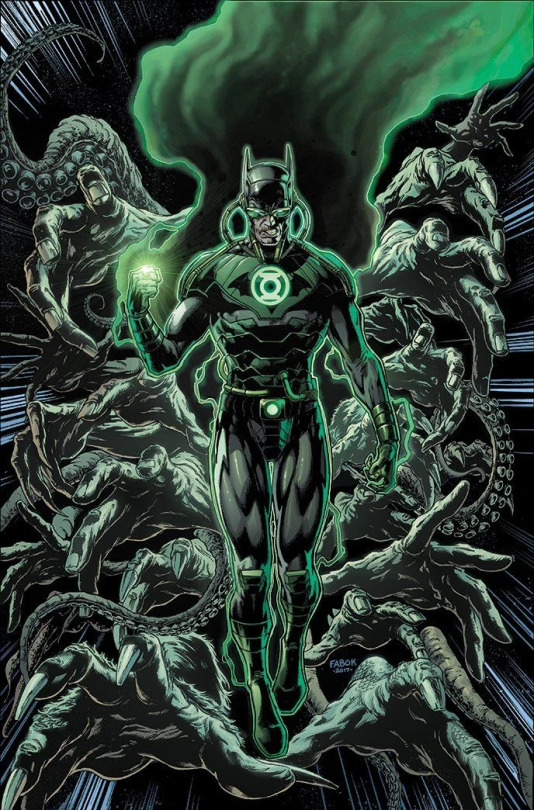
A Dark Multiverse Earth where Bruce Wayne moments after his parents’ deaths was judged worthy of a Green Lantern ring, but having only his hatred of crime rather than the discipline and morality he would come to develop becomes the murderous terror of the underworld, with even the Corps unable to stop him when he manages to force the darkness of his heart through the ring into ‘dark constructs’. Another ultimately throwaway Earth, this at least illustrates the properties of the Dark Multiverse in an interesting way: the constructs he creates aren’t something that’s ever been indicated as being possible or even sensible with the ‘real’ Green Lantern, but as this is a world literally made of nightmares that’s irrelevant.
54. Earth 39

Home to the United Nations superspies the Agents of W.O.N.D.E.R., who operating using super-technology with eventually deleterious side-effects. A pastiche of the obscure T.H.U.N.D.E.R. Agents, it’s hard to imagine anyone with much to say about them wouldn’t simply wish to write an actual comic about them under the current rights-holders, though the concepts described in Morrison’s provided information are enticing.
53. Earth 41
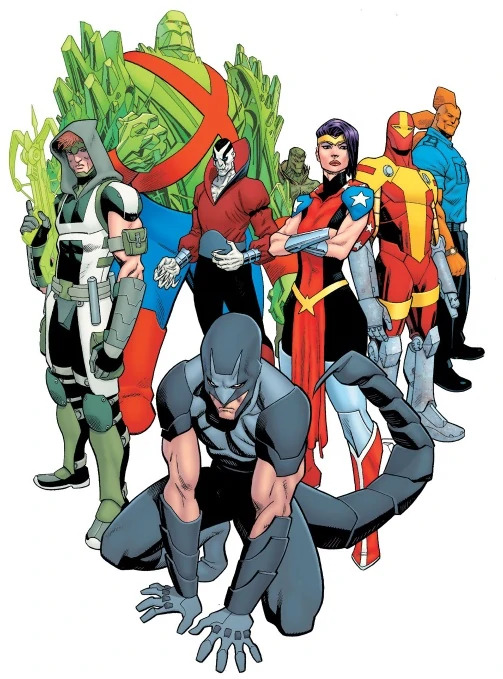
A riff on several of the superheroes published by Image Comics over the years, they’re worth having around for the occasional heroes of the multiverse groupshots for your big crossover comics and Dino-Cop turned out to be charming, but it’s doubtful someone with a big Spawn story in them for instance would use Spore as their outlet.
52. Earth 9

All I know about this is that this is a ‘what if superheroes really changed the world’ Earth, and when those are a dime a dozen, the additional conceits of the names of the various characters not at all corresponding to their traditional backstories and attributes, and being the brainchild of creator Dan Jurgens, are far from enough to sway me. I understand there are some fans out there who may heartily disagree, to be fair.
51. Earth Negative 52

Another Dark Multiverse throwaway Earth, this time one where a Batman shattered by losing his various partners taps into the Speed Force so that he can finally be everywhere at once to stop all crime. This is distinct however in that he achieves this by defeating The Flash, chaining him to the hood of the Batmobile, and driving it so fast their atoms explode and merge, which is thoroughly rad and gets it big-time bonus points next to its contemporaries.
50. Earth 37
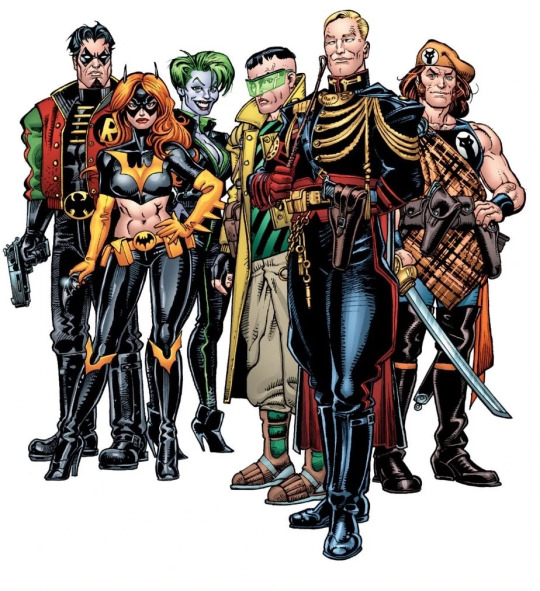
An Earth based on the DC works of creator Howard Chaykin, its conceit of being a world that progressed technologically far faster than our world but culturally remains decades behind us is interesting, but I’m not much of a fan of his work that I’ve read and most of what’s been drawn upon here doesn’t seem to have much of a following.
49. Earth 30
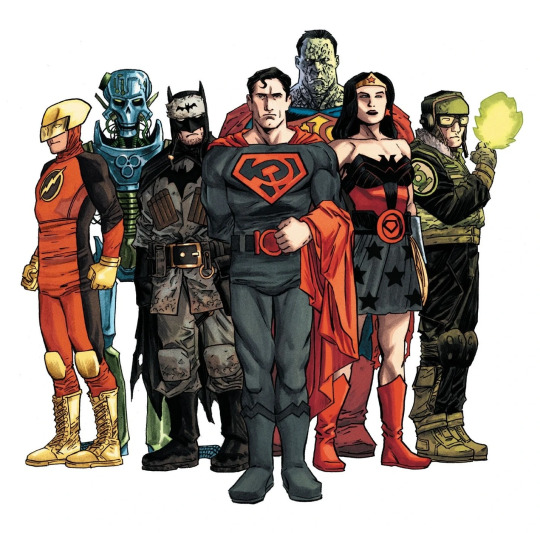
The world of Superman: Red Son, where Kal-L landed in the Ukraine and grew up to become leader of a global Soviet Union, before realizing he had deformed humanity’s development and faking his death. Leaving Earth in the hands of a Lex Luthor who while still very much a bastard found public approval in America for fighting Superman, Lex ultimately led Earth into a utopia that over time fell into complacency and became its universe’s version of Krypton, Jor-L (Luthor’s distant descendant) and Lara sending their baby back in time to survive and establishing a predestination loop. While several elements of the DC Universe are present in a limited capacity that could in theory be expanded on, Superman and Wonder Woman are the only superheroes of long-term note and both their stories are very much concluded, seemingly leaving little to do here except have the Superman with the hammer and sickle logo show up in event comics.
48. Earth 6
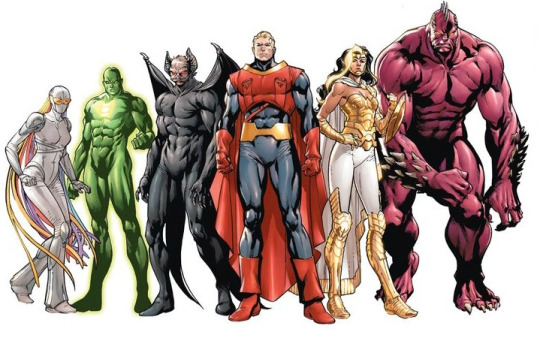
The world of the Just Imagine Stan Lee Created The DC Universe series, where the father of the Marvel Universe rebuilt several DC figureheads from the name and a few pieces of imagery up. The results were mixed at best, but a series of gorgeous artists involved in the projects mean the characters certainly look interesting even if it’s hard to imagine creators going back here in any meaningful capacity.
47. Earth Negative 1

A Dark Multiverse world where Superman turned on humanity for reasons unknown, and Batman deliberately infected himself with the ‘Doomsday Virus’ to gain the properties of the hulking monster and defeat his former friend. Now numbed to human emotion and vulnerability, this Batman hopes to spread the virus as to make humanity similarly indestructible, as well as shield them emotionally from what he has come to see as the false hope Superman represents. This Batman didn’t end up a major figure in the same way as The Batman Who Laughs, but the conceit is killer and I hope someone picks up on it one day.
46. Earth-52

A universe somewhere outside the local 52, a ‘remnant’ of sorts of the main DC universe circa 2011-2016 prior to cosmic revisions resulting in the current setup. A world where superheroes had emerged approximately 5 years earlier and home to lots of dudes in very dumb battle-armor, most fan-favorite stories from this era have been carried forward into the current history, and its unique version of Superman under Grant Morrison - a socialist crusader in a t-shirt and jeans who battled corrupt institutions and cosmic supervillainy in equal measure - was depicted as set loose from his world after 2016′s continuity changes as a defender of the multiverse. While a significant part of DC history both in-universe and publishing-wise, there wouldn’t seem to be all that much left here worth exploring.
45. Earth 2
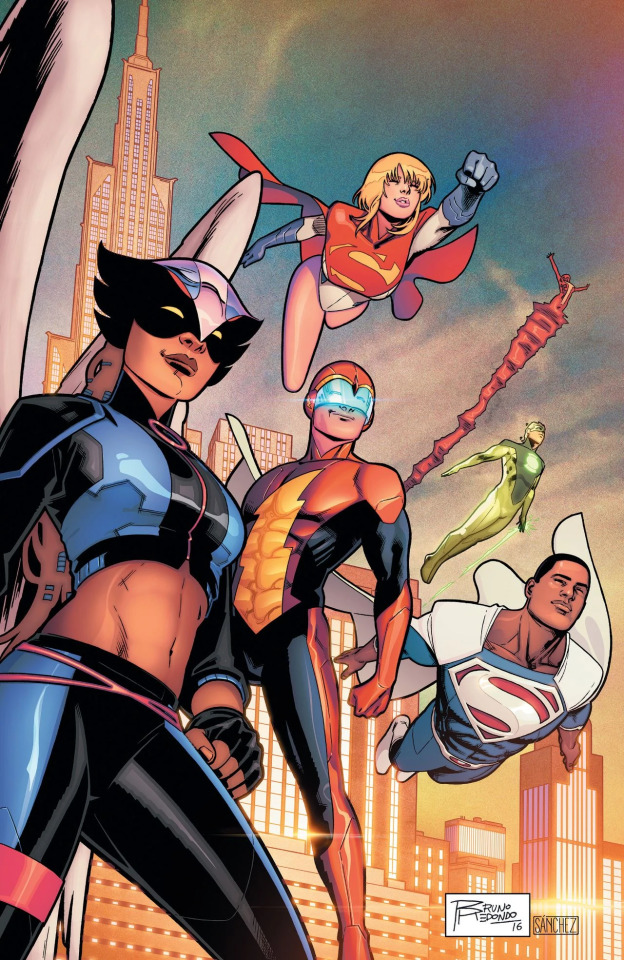
A world where Superman, Batman, and Wonder Woman alone represented the first wave of superheroes, they nobly fell in battle repelling an invasion of Earth by Darkseid. In time a new generation would emerge that were modernized, youthful iterations of the Justice Society of America, the superhero team predating the Justice League in DC’s publishing history. While the logline’s an interesting one and the successor to Superman Val-Zod debuted to some acclaim, for the most part this reinvention didn’t end up received well by either new or longtime fans, and a last-minute overhaul where this bunch was transplanted into a rebooted world without superheroes probably didn’t help. You still see them in crossovers and there are promising concepts, but this world seems basically dead.
44. Earth 50

When Lex Luthor ascended to the presidency and soon thereafter executed The Flash, Superman snapped, executed him, and took over the world alongside his allies as the Justice Lords, until they were ultimately overthrown by way of a parallel universe Justice League and a repentant Lord Batman. A Better World unequivocally rules, but given this is supposed to be those specific versions of the Lords rather than a new iteration, it’d be weird to see them up against any universe other than the DCAU. And, well...
43. Earth 12
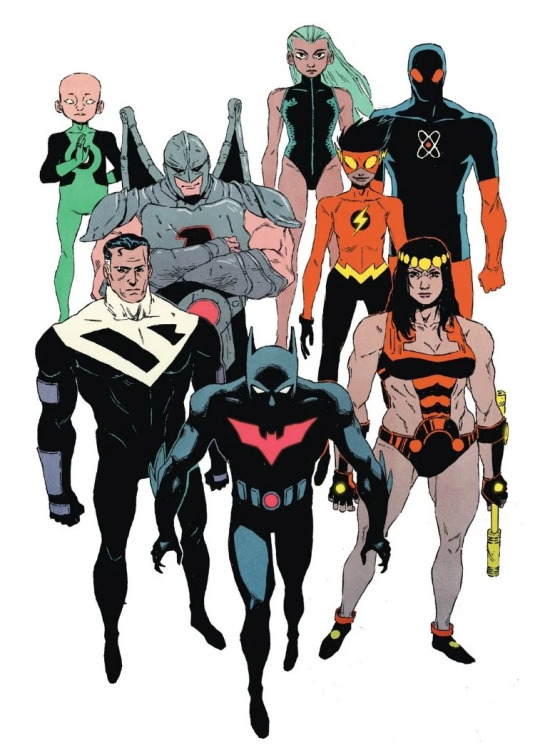
The DCAU, currently world of Batman Beyond and a future Justice League. The DCAU, you may be aware, extremely rules, but is also somewhat redundant in this context - the ‘regular’ DCU already has all its core components without too much aesthetic differentiation, and there’s already frequently a Batman Beyond in the future of said universe. It has its unique attributes that make people love it, it’s cool that it’s here, but on the macro scale it’s too clean an adaptation to bring much to the table to crossovers and whatnot, and you’d never see any further stories told there otherwise as really being part of the DCU cosmic landscape so much as a comic tie-in to the TV show.
(Also it’s odd this is placed here with the Justice Lords Earth as if to go ‘it’s secretly been part of the 52 all along, you just never noticed when it only crossed over with the one other!’ when there were two other parallel universes in the DCAU.)
42. Earth 43

A nightmare world haunted by the once-heroic, now vampiric Blood League, the obvious potential would be for this world to function as DC’s equivalent to Marvel Zombies. Recently however DCeased has come to fill that position, and while this world in practice if not concept skews more closely towards that source material as the former heroes still have vestiges of their old personalities - in theory distinguishing it as its own spin worth keeping around - it’s hard to imagine most takes on ‘Justice League but monsters’ won’t come out under the DCeased banner for the foreseeable future.
41. Earth 40

A world of pulp villains made to oppose Earth 20, these guys are simple but a hoot.
40. Earth 35 aka the Pseudoverse
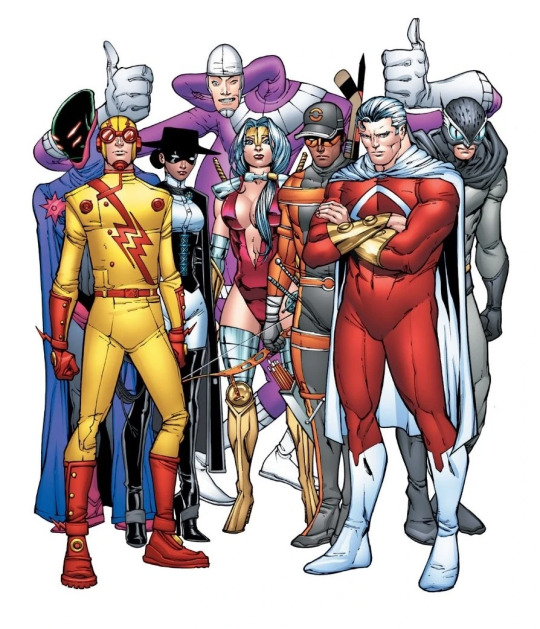
More analogues to analogues, this time of the Awesome Comics characters largely defined by Alan Moore in Supreme. This opens up the promising vista of ‘DC if it were designed by Alan Moore’, but in practice as demonstrated by his work with both DC and the analogues these mimic, that would just be...well, good DC comics, which you don’t need a whole extra universe for. The notion of this as a universe artificially created by Monitor ‘ideominers’ however both gives it a unique place in the multiverse, tackles its status as a pastiche in a unique way, and gets back to ideas of the power of imagination in both Supreme and Moore’s other works, so it’s likely there could be something to be done here.
39. Earth 11
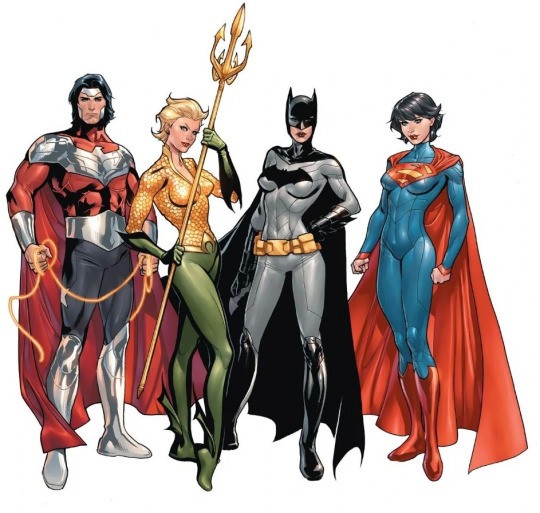
A bit of a study in contradictions. This is seemingly a rather straightforward ‘gender swap’ Earth with Superwoman, Wonderous Man, and so forth. Also, its version of Star Sapphire implied it’s not subjected to constant crises in the same way as the main universe it mirrors, maintaining a greater degree of consistency in the process. At the same time however it’s mentioned that the Amazons rather than leaving Man’s World for Themyscira shared its technology and philosophy with the world, changing it forever, suggesting a far different world from what we’ve seen in glimpses here. Until it decides one way or another whether it’s a simple mirror to the regular DCU or a radically different take, it hovers in a state of uncertainty.
38. Earth-2 aka Earth Two

The original version of Earth-2, home to the DC Universe of the 1940s with aged versions of Superman and company and the original Justice Society of America. The first take on a DC universe that would progress in something resembling ‘real time’ rather than keeping the headliners as perpetual twenty-to-thirty-somethings, this was also the birthplace of heroes such as Power Girl and Huntress. I’m of the perhaps controversial opinion that this is a concept that was explored better in later takes: there’s a sense here that the largely forgotten follow-up generation eventually introduced, with the exception of the two heroes mentioned above, will never really matter in the same way as their still fully-active predecessors in spite of ostensibly taking over the family business, meaning you never quite actually get what you want here, which is to see a DC where things meaningfully change and move on - well into his middle age and his mentor’s death long behind him, Dick Grayson is still Robin. Add in the odd, ignominious demise of the original Batman and its Superman’s odd eventual fate - which slide from bizarre to intolerable if you accept the frequent implication that these are meant to be the original versions of them from the 1930s - and I can’t help but think the enjoyable high concept was never realized as well as it could be here.
37. Earth 4

The Earth of the characters of Charlton Comics who would go on to inspire Watchmen, this initially seemed like one of the most promising worlds after its debut in Pax Americana drew perhaps the most pronounced critical acclaim of any single issue in the past decade as the site for creators with something to say to work with Watchmen without actually touching that property. Now, however, Watchmen itself is in the mix: most wouldn’t reasonably go here while the material they’re truly referencing is now freely available (especially those simply wanting to draw fan attention by visibly playing with those toys, the way Earth 4 sidestepped) even though that world itself is now massively compromised past the original text, and with the ‘Watchmen Earth’ no longer an option and the characters themselves - if cleaned-up, more mainstream versions of them - existing in the DCU proper, this world’s role seems to have been largely stripped from it. I have to imagine there’s still potential here for those with the talent and commitment though.
36. Earth 44

A world where in the absence of natural superhuman beings, Doc Tornado created a Metal League of robot superheroes to protect the Earth. A promising concept definitely worth a few stories.
35. Earth 15
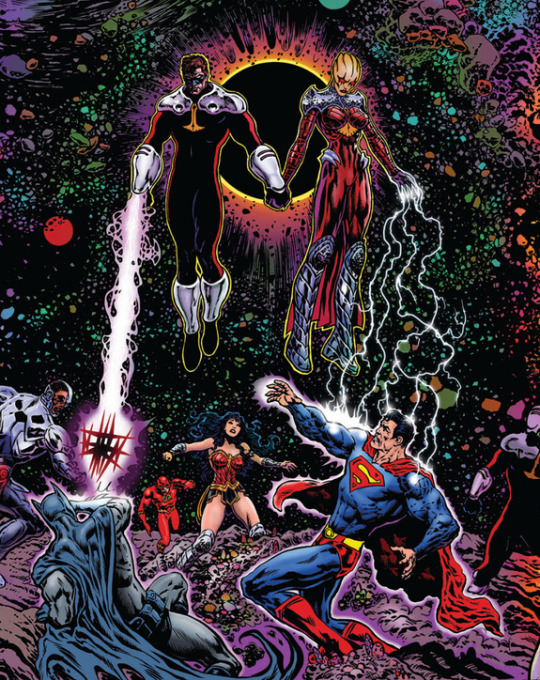
Once a perfect universe destroyed in a rampage by another Earth’s Superman, it was artificially reborn through the will of Countess Belzebeth - a cosmic vampire - as a copy of the Prime universe with the Green Lantern Corps replaced by Belzebeth’s despotic Blackstars, the uncertain and bitter heroes of this universe warped through the lens of Belzebeth’s perceptions of them had no chance against her forces. While its inhabitants are a bit samey what with all life having been subsumed into the diamond will of Blackstar Controller Mu, the idea of a conceptually weakened DCU being turned into an army against the rest of the multiverse makes for a terrific threat, and the prophecy of the ‘Cosmic Grail’ (a Green Lantern power battery lost somewhere in the multiverse) and that the First Lantern of the multiverse Volthoom hail from its original incarnation lend it some extra mythological weight.
34. Earth 32

A mashup world hosting the likes of the Justice Titans, Young Justice International, and the Doom Society. A world that’s home to Aquaflash will probably never have an ongoing all its own, but plenty of stories, miniseries, and even a brief line of comics have been based on mashup characters before, so there’s plenty of proof of concept for this being able to endure.
33. Earth 23

An Earth where Batman (naturally) is the only white guy on the Justice League, and Superman is not only President of the United States in his secret identity as Calvin Ellis, but the leader of the multiverse-spanning superteam Justice Incarnate. It reads like Morrison trying to do his idealized take on an ‘Ultimate DC’, a more diverse and politically engaged superhero landscape that doesn’t scale down its big ideas in turn, and if I were ranking it at the time it was introduced it would go much higher. The problem is that its version of Superman is modeled after Barack Obama, and that guy isn’t President anymore (and for that matter his legacy seems to grow more complicated by the year). As a result the vibe goes from triumphant to wistful mourning if not outright bitterly ironic, and that’s a needle that would have to be threaded before doing any substantial work here.
(Also, since several Justice Leaguers here rather than being made black are replaced with various black counterparts they’ve had over the years, that means Wonder Woman here is the 70s Amazon Nubia. And, uh, that name is something that would have to be...something.)
32. Earth 19
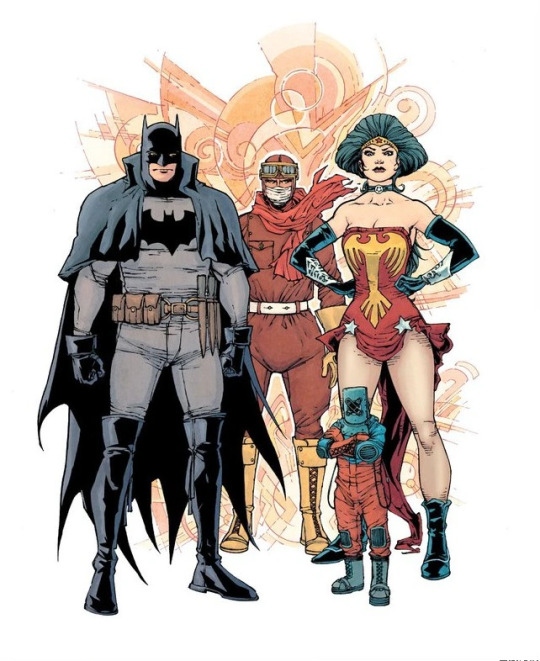
Steampunk superheroics; superhero period pieces are usually fun, and this is built on a foundation of pretty Mike Mignola art (though confession that I’ve never read Gotham By Gaslight), so sure, this one has potential.
31. Earth 18

Same as above but cowboys instead. This gets extra credit because cowboys mesh better with superhero conventions, and the additional twist of this world being frozen in history by the Time Trapper, forcing them to approximate modern technology with 19th century resources.
30. Earth 31
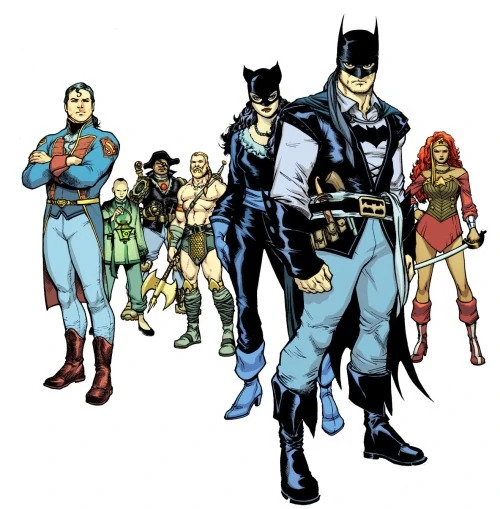
A post-apocalyptic waterworld where humanity is protected by Captain Leatherwing and assorted other pirate superheroes. Another ‘superheroes but in another genre’ setup, the post-apocalyptic, environmental twist makes it unfortunately more relevant than its peers, though I don’t think it’s quite the best end of the world as we know it on the list.
29. Earth 42

Home to the adorable, innocent world of the chibified Little League...secretly robots unwittingly enacting an endless stage play for the malevolent being known as the Empty Hand, running scenarios of his devising in preparation for a coming war with the rest of the multiverse. It’s a neat little multipurpose world, able to be played both as amusing contrast, or as parody whether light-hearted or cynical, in their endless ‘playtime’.
28. Earth 7
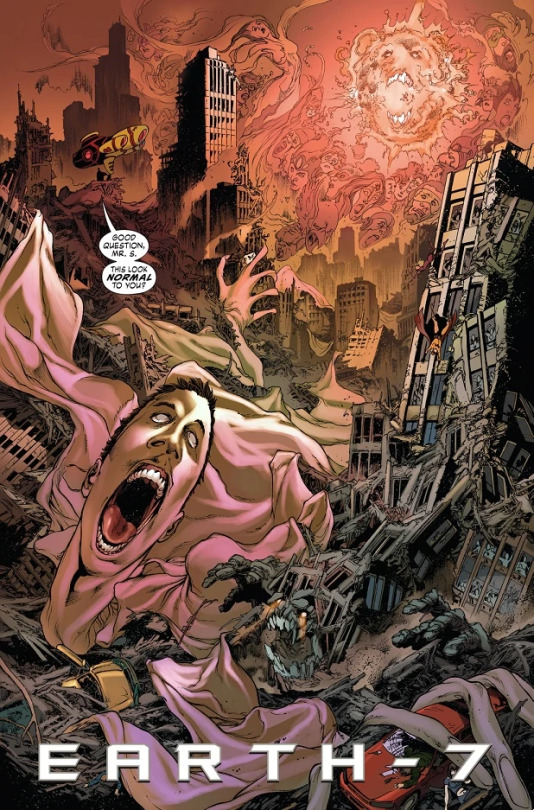
Formerly home to counterparts of the heroes of Earth 8, it was shattered by the Empty Hand’s forces and its desiccated cities made his throne, the zombie hordes that were once its champions his armies. The ‘Ultimate Marvel’ to Earth 8′s Marvel proper (and now Marvel Zombies), the idea of the broken remains of the cool version of the cool superhero universe as the lair of the ultimate evil has a certain appeal.
27. Earth 52

The last of the Earth 52s on this list, this newly added 53rd core Earth is home to Frank Miller’s Dark Knight books. Much as the reception to it over the years has become...mixed, at best (for my money Dark Knight III is the only one that’s not at least bad in a very interesting way, and even it still has its moments), the surprised generally positive reception to the most recent entry in Dark Knight Returns: The Golden Child suggests there’s still life in this oddball corner of the cosmos yet.
(Fun fact: this was Earth 31 in a previous version of the multiverse, and Morrison intended it to be included as such in Multiversity - hence why Earth 31 is made up of inky scratches on the Map - but Miller requested he not since he wanted to keep his domain separate from DC’s ongoing storylines. Instead he agreed later to Scott Snyder and Greg Capullo’s use of it in Dark Nights: Metal as DKR is famously Snyder’s favorite comic, bringing it in as Earth 52.)
26. Earth 47 aka Dreamworld

Where the Love Syndicate of Dreamworld dwells, baby: all is groovy. It’s incredibly specific in both era and theme, but a psychedelic universe with heroes to match invites tons of possibilities.
25. Earth 10 aka Earth X

It’s the Nazi Earth that sucks. It has superheroes who unnervingly are about as well-intentioned and effective as the standard set in the New Reischman, opposed by the few remaining dregs of the Freedom Fighters led by Uncle Sam; only their Kal-L, Overman, once Hitler’s weapon, truly understands the scope of the atrocities that led to their ‘utopia’, having grown a conscience too late and ever-aware that no feat in the present can ever redeem the oceans of blood on his hands. You can do horrifying introspective stuff with them as in their Multiversity chapter, you can tell Freedom Fighters stories like the recent miniseries, or you can just have the Justice League show up to fight the Nazi Justice League. A Nazi world is a standard one in multiverse stories for a reason, you don’t get easier targets.
24. Earth 5G

The DC universe that’s...sort of here and sort of not. Doomsday Clock and other upcoming stories appear to be shifting us over to this, but in most of DC’s line of titles the leap hasn’t taken place yet. As we haven’t seen the bench of successor heroes apparently primed to take over only so much can be judged, but the vast changes suggested by the new ‘official timeline’ that’s been leaked suggest a bizarre attempt at incorporating as many of their editorially-favored biggest hits as possible into a bizarre selective mishmash, without particularly serving the status quos any of the constituent characters said history is meant to bolster (with the exception of Wonder Woman, now framed as the first superhero, which would at least be interesting and a deserved bolster to her profile if there were any particular impression her new standing would be meaningfully followed-through on), while also not only reinstating the mutually destructive retcon of the JSA as preceding Superman, but taking the absurd extra step of actively presenting them as his inspiration. Of course we haven’t seen it in practice yet, and at the end of the day good stories will surely still be told here, but the foundations here are about as shaky as they’ve ever been for the ‘core’ DCU as a wholehearted capitulation to placing dotting all the i’s and crossing all the t’s over the actual narrative logistics of making a shared universe function smoothly.
23. Earth Negative Zero aka Betwixt
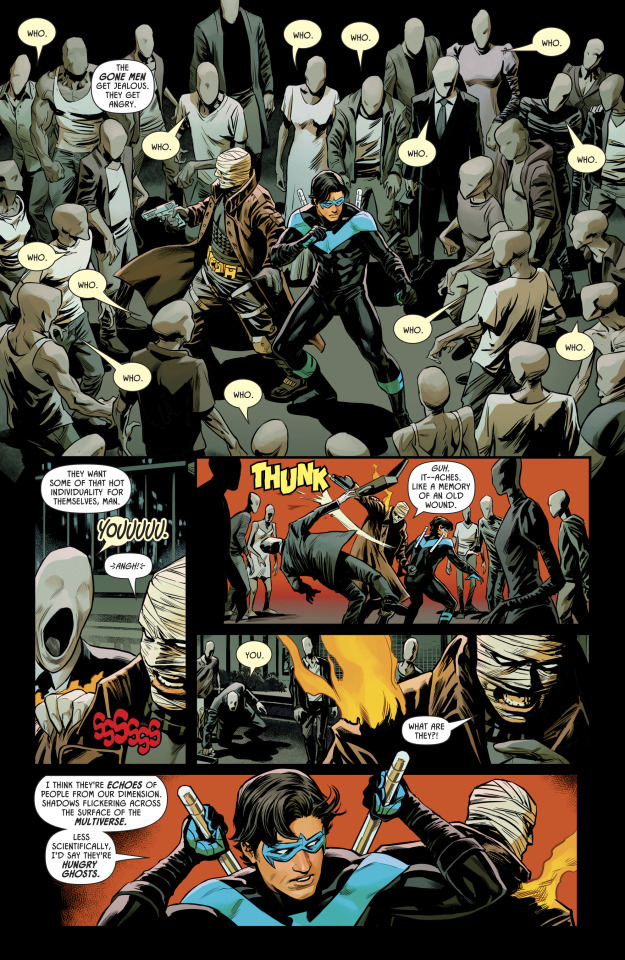
A world where those whose senses of self entire disintegrate fade away to seeking to feed on those still well-defined, this bears similarities to the realm of Limbo where ignored superheroes reside, but with just enough conceptual differences and a hellish, malleable twist that makes it the best thing anyone’s come up with to date to do with the Dark Multiverse.
22. Earth 48 aka Warworld
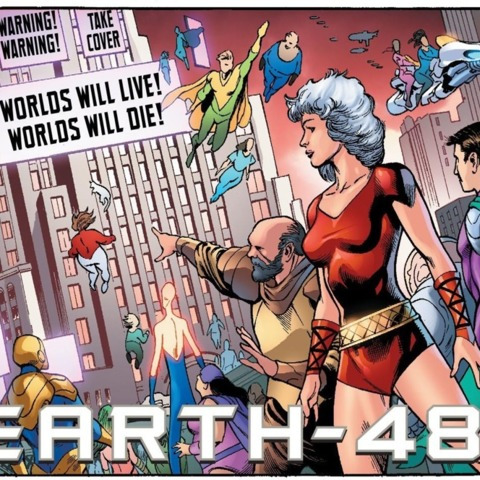
While its iconography is rooted of all things in castoff characters from Crisis On Infinite Earths and no-hopers from Countdown To Final Crisis, the actual conceit here of a world where literally everyone and everything is a superhero that operates by superhero rules, a world built by the New Gods as defenders of reality, is wide-open and tantalizing.
21. Earth 38
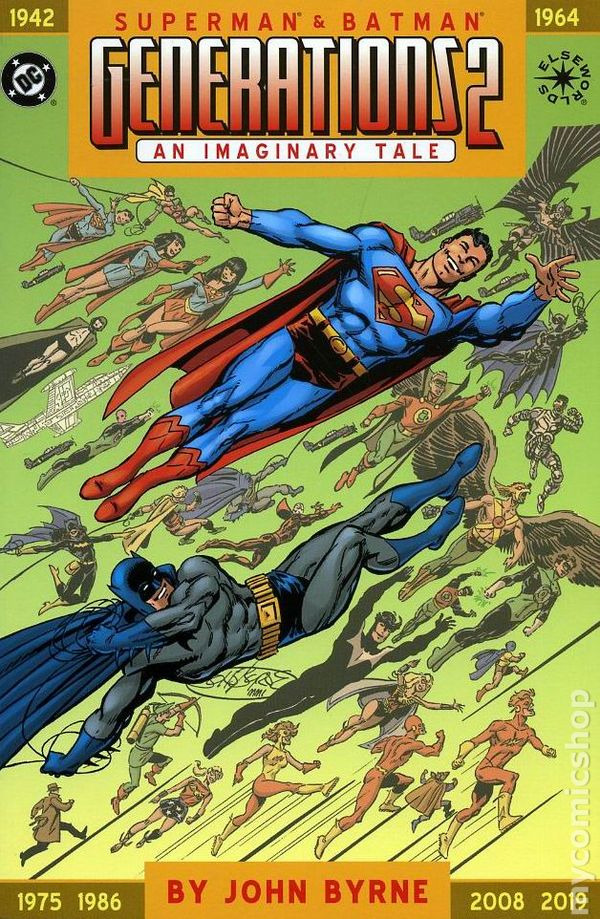
Another major shot at a DCU that aged in real time, this version has its own idiosyncrasies but far more of a sense of forward momentum and meaningful change, with the original Superman and Batman still leading the pack one way or another but successors to both them and the rest of the heroes truly stepping up. Also the predominant hero of the 21st century is Knightwing, the grandson of both Superman and Batman who has only partial Superman powers but also Batman training, which is just really cool.
20. Earth 3
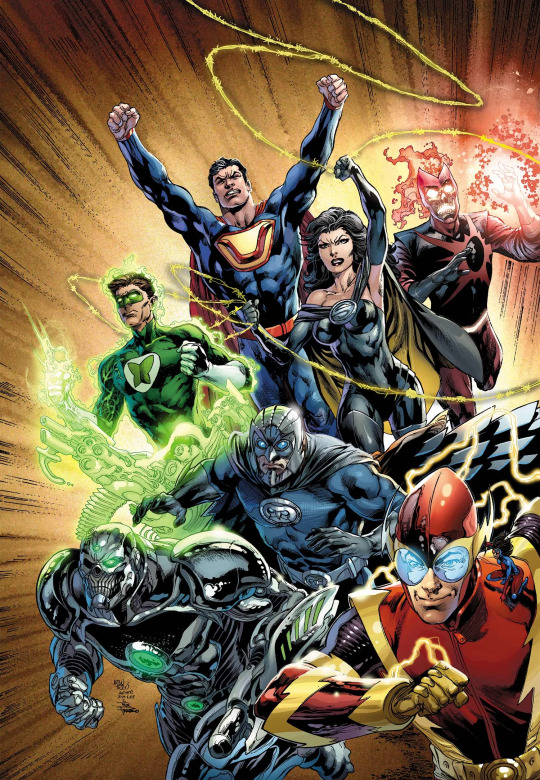
The good ‘ol classic evil mirror universe, where strength is the only law, the forces of evil always win in the end no matter how bright the day may become, and thus the Crime Syndicate operates as it pleases. It’s never quite as interesting as you want it to be - its villains are largely one-note - but its warped societal and cosmic rules, and that each character has a handful of twists on the mythology of their counterparts rather than being an exact (if morally inverted) duplicate, means it could easily one day come to live up to its obvious potential in the right hands.
19. Earth 21

Here, most superheroes were forced into retirement after World War II by McCarthyist paranoia, but at the dawn of the 1960s the few remaining and a new generation are emboldened to step back into the light, spearheaded by the Justice League of America. DC: The New Frontier is a modern classic, with a direct standalone follow-up virtually out of the question; as it doesn’t quite lead into the world of the actual 1960s DC Comics either, its sole function in its capacity as a world in the multiverse is as a 60s ‘period piece’ Earth. Given that’s where most of the architecture of DC as we now know it was built however, that’s hardly a problem.
18. Earth 26 aka Earth C
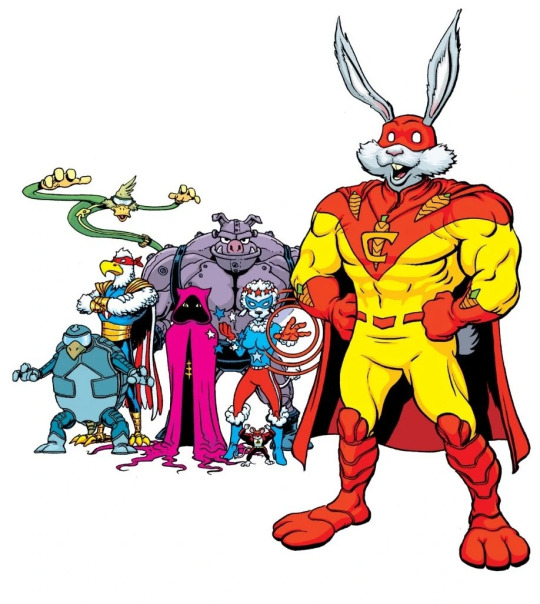
Funny animals are fun, and in a superhero universe that means you get superhero funny animals, courtesy of Captain Carrot and his amazing Zoo Crew. What’s not to love?
17. Earth 22

While time has somewhat dimmed the acclaim that originally surrounded it, Kingdom Come and its tale of a Superman coming out of retirement alongside his allies to try and reign in an out-of-control new generation remains a landmark moment in the genre, and in many aspects still holds up. Unlike many stories of its stature this world has always played nice with the mainline universe in terms of guest appearances and crossovers, including works by the original creators Mark Waid and Alex Ross, and as the most iconic and conceptually expansive work to date set in a DC universe that has joined in the march of time, that makes it a prominent and useful one to have around.
16. The Antimatter Universe of Qward aka The Reversoverse aka the Anti-Verse
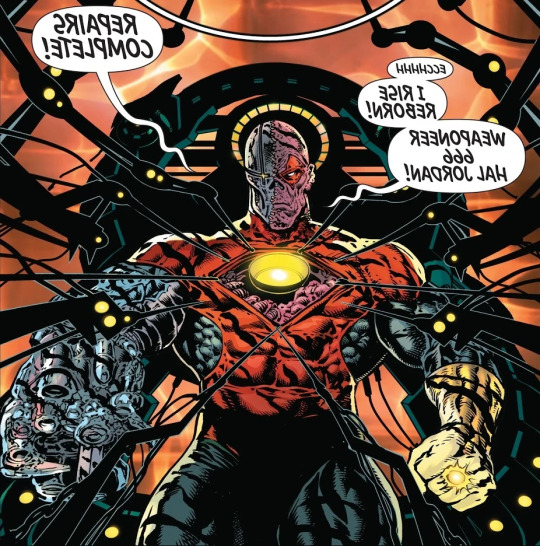
The original dark flipside of DC reality, this has occasionally also played home to the Crime Syndicate - and their best stories by far, to boot - but mainly serves as a home base to the Weaponeers of Qward and occasionally Sinestro. While largely unexplored it has a massively central place in DC’s cosmology and the birth of the multiverse, the glimpses of a society of pure evil in early Silver Age Green Lantern and JLA: Earth 2 are far more fun and interesting than anything seen in Earth 3′s history, it’s about to get even more room under Morrison to find definition, and as the ultimate mysterious Forbidden Realm of the DCU the possibilities could be essentially endless in the right hands.
15. Earth-1985 aka Earth One
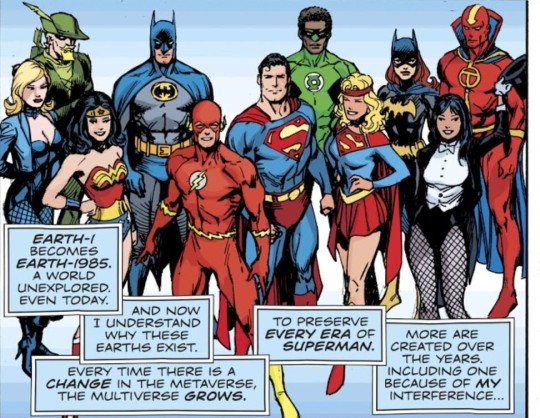
The DC universe of 1956-1986, and the dragon an entire generation of creators have spent their livelihoods chasing as the ‘classic’ iteration, as evidenced by one of them flat-out confirming it still exists somewhere out there. While that makes it frequently redundant when the main DCU is trying hard to mimic its feel - a few divergent notes such as Maggin’s idiosyncratic take on latter-day Superman and its version of Jason Todd aside - the prospect of a DCU that remained in that mold forever to a greater or lesser extent even if time may have moved forward could, in principle, free the main universe to go off in wildly different directions, knowing this image of DC always exists in its own space to return to when so desired rather than actively turning the current status quo to face backwards.
14. Earth 17
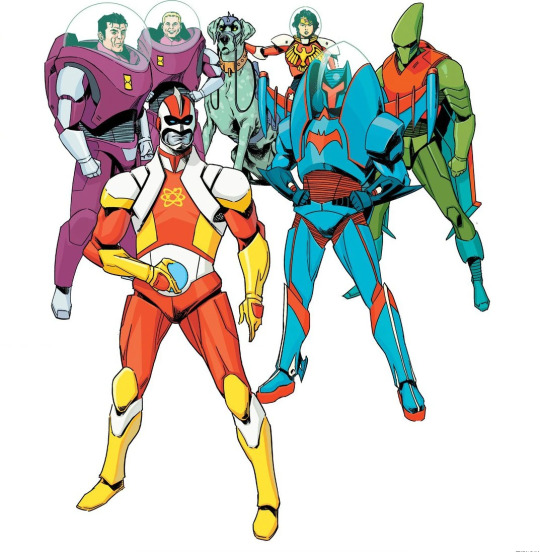
The Atomic Knights of Justice quest across the radioactive landscape of Novamerika in a world decimated by nuclear was in 1963 in search of Earth 15′s Cosmic Grail, their only hope against the coming of Darkseid. A mashup of the Justice League with the protagonists of one of the most fascinatingly bizarre comics of DC’s Silver Age in the Atomic Knights, a mythic quest, and most relevantly “What if Fallout had superheroes?” leaves this feeling like it’s just waiting for its moment to shine.
13. Earth 8 aka Angor
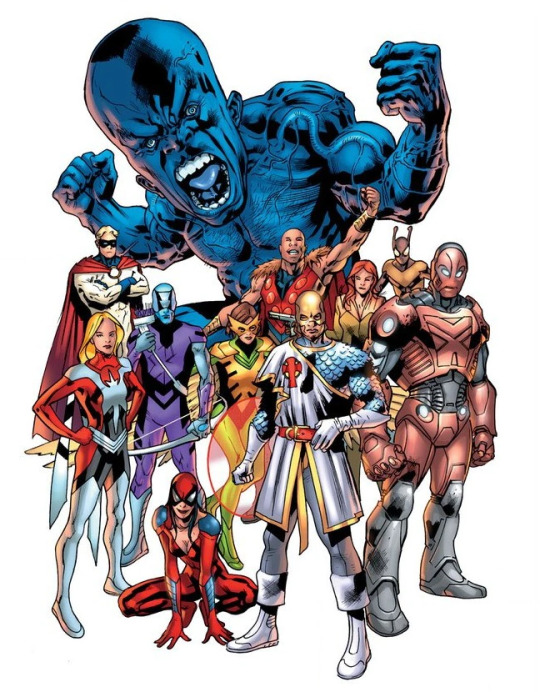
Known across the rest of the multiverse as the protagonists of the Major movies and comics (as opposed to the sub-imprint Essential Major reflecting Earth 7), in actuality the non-actionable champions of Angor - the Retaltiators, the G-Men, the Future Family, and The Bug, among others - are as real as any other superheroes, and while they struggle under the weight of both mistrust by the general public and frequent in-fighting, they’ve thus far protected their world from threats global, universal, and multiversal alike. The Big Two having stand-ins for each other is a longstanding tradition for good reasons: it not only allows for crossovers where the legal stars don’t align (and adds an extra fun shock of recognition whenever the reader realizes what’s happening), but provides each of them an ongoing version of those archetypes to play with within the confines of their own narrative, whether as contrasts or bending them to fit the tone of a very different shared universe than they were originally created for.
12. Earth 16 aka #earthme
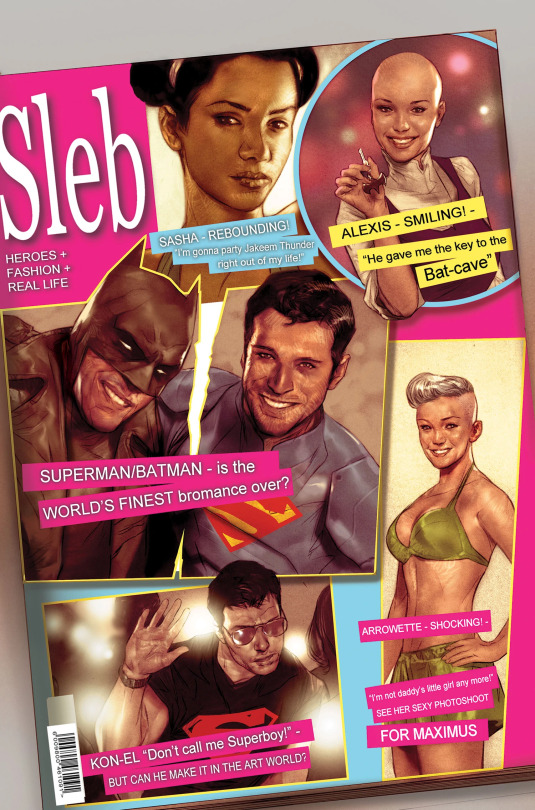
The world where every sidekick, super-son, successor, and short-lived ‘new generation - of HERO!’ at last seize their moment in the sun...in a world already saved by their predecessors, with little left to do but lap up lives of super-celebrity and wish for one, just one little alien invasion or immortal tyrant to justify their existences for them. The best of DC’s futuristic/what-if-time-mattered alternate Earths in my opinion, taking to its logical conclusion the notion as stated by Morrison in interviews that as the Justice League will stick around as long as there are evils that need fighting, the ever-present promise of the torch being passed could only ever truly, permanently take place in a world where the job was already redundant. Playing as it does with in-universe history, real-life publishing realities, celebrity culture, generational divides, and the question of what being a superhero even means sans the usual confrontational justifications, it’s by its nature only going to become more expansive and interesting a commentary as time goes by and the regular DCU goes through its cycles of reboots, rebirths, and returns to form.
11. Pocket Universe 54471
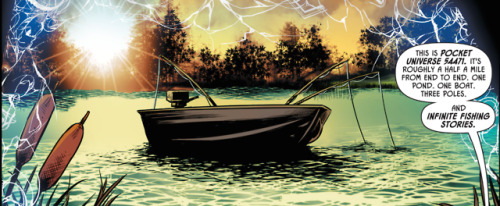
Exactly what you see: Superman made a little pocket universe a half mile wide to go fishing in and he was gonna take Bruce and Dick there for the former’s bachelor party, and he knows about and/or created at least 54470 others. It’s absolutely delightful not only in its own right, but as an opening of the door to what the multiverse can mean in DC comics as a sci-fi idea generator beyond riffs on existing properties, while still being presented with a distinctly DC sense of playfulness.
10. Earth 45 aka Earth 45™

The origin of one of the best Superman villains of all time in Superdoomsday - the Superman idea in a world without him brought to life but twisted by committee into a murderous living brand - a horrifying corporatocracy standing for all Superman and company are meant to stand against, and an enduring threat with the world still in shackles and those in power still able to dream to life whatever vision they please of absolute power to be wielded in their name.
9. Earth 36 aka Terra

Justice 9, the defenders of Terra - or I suppose Justice 7 now after the losses of Optiman and Red Racer, though how long does that matter in a superhero universe? - is the most interesting of the direct analogue groups for my money. Technically speaking they’re another twice-removed set like 34 and 35, standing in for the heroes of Big Bang Comics, but given my understanding is that there’s no major “Like the DC heroes, BUT” twist in that book the way Astro City and Supreme have other than a retro ‘good old days’ bent (which definitely isn’t the case here with at least two queer members), Justice 9 basically function as direct analogues for the Justice League...in the same comics as the Justice League. To me, that’s actually fascinating: one of the most useful elements of stand-in characters like this is the ability to tap into the iconic power of archetypes without the familiarity surrounding the actual figures, in the way Planetary for instance uses just enough distance from the source material to make a couple dozen decades-old pop culture touchstones feel completely new, and this implements that approach to the material to the DC characters with heroes who can actually themselves team up with DC proper. As many approaches as could be taken with that though, that potential alone probably wouldn’t be enough to shoot it this high up the list if not for a major additional factor: in the same way that in the old-school DC universe the heroes of Earth-1 had comics reflecting the adventures of the heroes of Earth-2 long before learning they were real in another universe, DC Comics are published on Earth 36. Aside from the neat trick of putting our leads in the same position as the Golden Age heroes, it means Justice 9 grew up with the Justice League as their heroes in the same way as us the audience before becoming heroes themselves, and then they grew up to learn they were real. These folks absolutely deserve to become multiverse standbys.
8. Earth 51
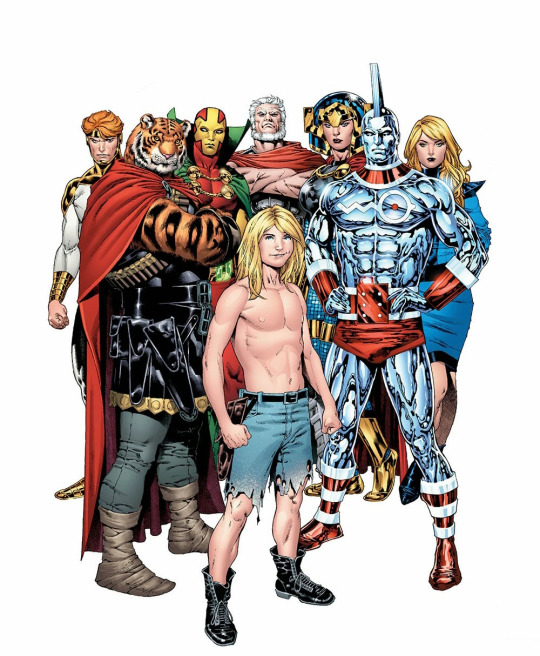
The Earth where all Jack Kirby’s ideas live as a single cohesive world and adventure. No further justification is needed.
7. Earth 13

A world of occult danger where DC’s traditionally superheroic magical figures such as Zatanna and Deadman are given the full Vertigo horror treatment, while the more intimidating and morally dubious figures such as Etrigan and John Constantine get logos and codenames. Not only an expansion but an offputting inversion of one of DC’s most acclaimed corners, this oddball bunch could bounce off of the capes and tights crowd as easily as your Shadowpacts and Justice League Darks, in ways no other team from any corner of the multiverse could.
6. Earth 20

Pulp champions of a 21st century that remains aesthetically moored in the early 20th, of the handful of Earths converting DC standbys into different genre territory in the local 52 the homeworld of the Society of Superheroes hits hardest, given the role the likes of Doc Savage and The Shadow played in that time shaping the conventions of superheroes as we know them. Add the wealth of concepts presented in their oneshot and the decision to hew away from the traditional Justice League riffs of parallel Earths, and of all the truly new worlds introduced in Multiversity, Earth 20 is the one that most feels like it could support an ongoing all its own.
5. Earth 29 aka Htrae

You gotta have Bizarro World. You just gotta.
4. Earth 33 aka Earth Prime
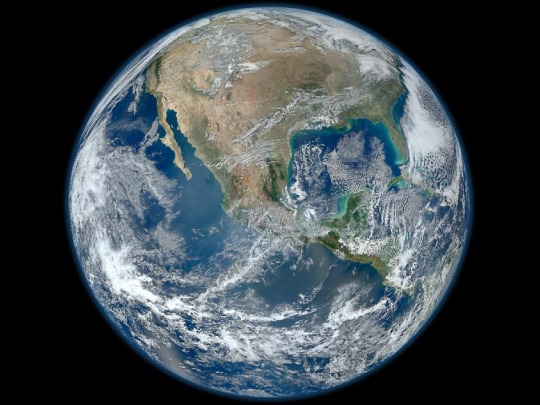
The in-universe representation of our very own pale blue dot. Whether it’s the birthplace of Superboy Prime where assorted DC creators had to deal with a visiting Flash and Superman throughout the 60s and 70s, meta games with the various incarnations of Ultra/Ultraa, a looming threat yet also victim in need of rescue through the eyes of Justice Incarnate, or the unwitting home of the ‘Superman’ or ‘Batman’ of Kurt Busiek’s off-center takes on the characters in Secret Identity and Creature of the Night, over the years DC has shown a decent amount of restraint in not going back to this particular well too often unless someone has a really clever tale to tell, and as a result it has maybe the single best batting average of all the ‘parallel Earths’ that have been regularly returned to by DC over the years. Give yourselves a hand, folks!
3. Earth 5 aka Thunderworld
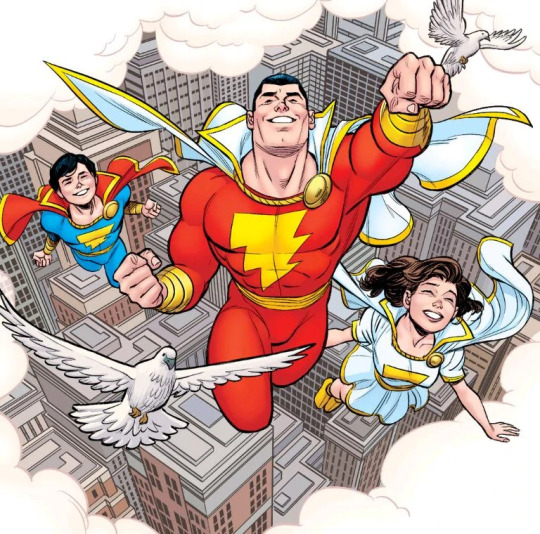
Home not to ‘Shazam’, but Captain Marvel and the Marvel Family in all their glory, a technicolor world playing by the rules set down by Otto Binder and company where a superhero can literally battle planets and the most dangerous villain of all may be a very, very mean worm with glasses, a place of dream logic and childish innocence even by the standards of superhero comics. Captain Marvel at his best is one of DC’s most iconically potent players yet many seem to agree that much of his woes in recent years have come down to trying to find a unique space for him in the DCU proper. While I don’t know that it’s at all impossible to make that work, it’s certainly true that Marvel as he was originally presented doesn’t quite make sense in that world, whereas back in his own he keeps a flavor entirely unique to himself and his partners, whether for solo adventures or teamups with the heroes of the other worlds, playing it straight or examining some of the unsettling implications established by Thunderworld or finding a new way to make it work. Much like Bizarro World, it’s simply a locale the place doesn’t quite feel whole without.
2. Earth 25 (?)

While I’m a bit dubious on it definitely being Earth 25 in the core 52 based on interpretation of an offhanded line from Mr. Terrific (it has a multiverse all its own!), the fact of the matter is that America’s Best Comics came roaring out of the gate as proof of its own title, and basically didn’t stop until it ended. A couple after-the-fact Tom Strong miniseries (containing perhaps the most singularly cowardly hack move in the history of shared universe comics in undoing the end of Promethea) can’t detract from the core ABC lineup being made up of some of the most singularly clever, gorgeous, and heartfelt superhero titles to hit the stands, pretty much the platonic ideal of what you want books like these to look like. If this universe can hang around in any capacity at all until someone god willing picks them up again in a big way, it’s a win in my book.
1. Earth 0 aka Prime Earth

The extant version of the main DCU for at least a little longer, it really does feel like more than just about any version before it - at least for my money - they finally got all their ducks in a row, albeit right before blowing everything to hell. Most of the stories you really want to still have some sort of weight for the major characters are still in play to be built on, and most of the stories that clearly needed to be dropped are dropped. The cosmology’s fleshed out and expanding, the big names mostly work as they should ideally work while still heading into new territory, the JSA is mysteriously somehow around in the past without interfering with the primacy of Superman and the Justice League as the first known superheroes (a mystery that will never be resolved now due to the current reboot; damn shame) and the Legion of Superheroes have a new coat of paint, and there’s room for stories cosmically massive and intimately personal and utterly bizarre throughout the line rather than there being a single overriding idea of what these books should be. It may not be the perfect DC Universe by any means, but it’s a real, real damn good one, and of course without that thing, none of the rest of these universes would have been there in the first place.
81 notes
·
View notes
Text
Homecoming!

JUSTICE LEAGUE OF AMERICA #259 FEBRUARY 1987 BY J.M. DEMATTEIS, LUKE MCDONNELL, BILL WRAY AND GENE D’ANGELO

After killing a member of the Justice League, Professor Ivo sends another android to kill Gypsy.

SCORE: 7
The worlds of pre and post crisis and very curious. This story happens post-crisis. But the history the characters have, is pre-crisis. In this and the previous episode, there are references to Superman and Wonder Woman being a part of the Justice League. But in the revised story, this didn’t happen. I understand the confusion around Wonder Woman, but Superman was already re-introduced. As many of you know, it took some time for the Crisis changes to take effect in the DCU, as many writers weren’t in the know.
Spoilers after the break...
So, some references exists to Legends, but for the most part, this saga is a tie-in because they need this League to cease to exist for the new Justice League to be a result of Legends.

After Vibe’s death, it was a nice touch that they gave Gypsy a happy ending (well, it wouldn’t last too long though, as Despero will eventually have his vengeance on her).

The art is so strange to me, it looks very good in some panels, and a bit boring in others. But for the most part, is nice to look at.
#legends#jla#justice league#justice league of america#gypsy#martian manhunter#dc comics#comics#review#1987#modern age
13 notes
·
View notes
Text

I'd forgotten how disappointing the revised New 52 Black Canary was in terms of her history- no legacy heroes, apparently, so none of the JSA that were so key to her 1990 Secret Origins tale. As a result, she is taken in by an ex-Special Forces sensei (as is so often the case with abandoned children...), rather than trained by Ted Grant. Then she meets John Lynch, joins Team 7 and gets experimented on, along with Kurt Lance, and that’s how she gets her powers. And she has a covert ops background. Of course.
I have no real problems with the character in the New 52 present- Birds of Prey was generally good, I liked the solo/rock band series (even if I could never quite reconcile the two appearances, which always seemed ironic given the continuity obsession that drove the whole post-Flashpoint reboot), and Dinah is always enjoyable in the right hands. The creative team here are, I believe, a good fit for Dinah, it’s just that the origin side of the character lost any real flavour after the DCU was rebooted, so there isn’t much to play with in these early days. Everyone does well with what they have, but I just can’t bring myself to be invested in an origin driven by the sub-Weapon X machinations of John Lynch, or anything to do with Team 7 and the rest of the Wildstorm properties that it was decided should be brought into the DCU.
So many of them are Marvel or DC proxies anyway, to varying extents, and they never feel like a fit to the DCU when they crop up in a DC book- they still look ‘Image Comics’ in origin, and have a completely different sense of aesthetic and character to whoever they are interacting with, so that I am left feeling they have indeed come from another universe, but no one is rude enough to mention it to them and just ignores it until the plot runs its course. This isn’t to knock Wildstorm- I can name quite a few Wildstorm books I enjoy, but they have almost all been set in that ‘Wildstorm Universe’, rather than transplanted into the DCU with the resultant messy explanations when the need to reconcile two conflicting mythologies crops up. Presumably the decision to combine the two was an attempt by DC to categorically assert ownership over the titles and remove any hint of autonomy that may have once been associated with Wildstorm as an imprint? (perhaps similar thought processes drove the reclamation of Constantine and Swamp Thing from Vertigo, another attempt that really didn’t work out so well in the end for them)
Whatever the reasoning, this story is, for me, a good example of why the combination of those universes didn’t work (like a lot of the New 52)- the two just don’t mix very well. Dinah had a good, strong background as an inheritor of a superhero legacy- slightly problematic if you are fixated on the age of a character, as the linking of the JSA to WWII and/or the McCarthy era does tend to limit the flexibility of her birth year, but this is hardly an insurmountable challenge in comics- and plenty of opportunities to be portrayed as her own woman, both in terms of forging her own legacy and her general identity within the superhero pantheon, without needing the redundant history of government experiments and secret spy squads to explain her skills.
She didn’t want to simply be her mother all over again, and so there were good stories to be told about how she rebelled and reconciled with her mother, and she was not derivative of an existing male hero (as you could argue many of the female DC heroes are: Supergirl, Hawkwoman, Batgirl/Batwoman, were all based on male counterparts; even Zatanna was carrying on her paternal line. Huntress was perhaps not as explicitly Bat-derivative as Batgirl and Batwoman, but she is basically a slightly darker version of Batman in her methods, with a not entirely dissimilar costume design. There are exceptions, of course,- hi Wonder Woman!- but a lot of the big names tend to be derivative of a male hero, to some extent), which allowed more space to define the hows and whys of her hero’s path, so it’s disappointing that her new origin seems to generally define her in terms of Lynch’s genetic manipulation and her relationship with Lance. This latter element was always a part of the character in terms of Dinah using his death as a motivation to move on to something else and find her own way in the world, but this origin seems to make her almost literally co-dependent on him in terms of their power sets, which seems unnecessary and very limiting in terms of portraying her as a powerful female character.
Luckily the solo series could just ignore most of this and look to have some fun with the character.
From "Black Canary in Code Black", by Christy Marx, Rick Burchett, Nathan Fairbairn & Carlos M. Mangual, in Secret Origins 11
2 notes
·
View notes
Text
What Does Dark Crisis Mean for the DC Universe?
https://ift.tt/7vxO08M
DC has announced their biggest summer crossover since Dark Nights: Death Metal: Joshua Williamson and Daniel Sampere’s Dark Crisis, which will kick off with a #0 issue for Free Comic Book Day. But exactly what Dark Crisis is remains a bit of a mystery beyond some lovely teaser art and a promotional video.
Dark Crisis looks like it springs right out of Williamson’s multiversal revision from Justice League Incarnate. In the fourth issue of that series, we get a reconfigured, welded-together history of the DC Universe that slaps every crisis – from the classic Wolfman/Perez joint, through Zero Hour, Infinite Crisis, 52, Final Crisis, Multiversity, Doomsday Clock, and the Metal Wars – onto one coherent timeline. Behind all of them: The Great Darkness, the nothingness at the start of time, furious about being forced into a truce with the Light.
But where is it all going? Every Crisis ends with a massive status quo shift, and it’s reasonable to expect Dark Crisis to be the same. Here’s what we think it’s all about based on what we have seen so far.
DC 5G IS FINALLY HERE
With Williamson writing approximately a third of the mainline DCU’s total output, it might be easy to forget that he has been in the lead car of the DCU all the way back to Rebirth, qualifying as the second (or third) longest tenured writer to ever tackle The Flash. He wrote the first big Rebirth crossover in Justice League vs. Suicide Squad, and handled key chapters in all of the various Metal books. So he’s been around since before the next generation of heroes – Jon Kent, Yara Flor, and Jace Fox – were even a twinkle in editorial’s eye. Two editorial regimes ago.
DC’s abandoned 5G initiative was the brainchild of Dan DiDio, a story that would have seen Jace, Yara, and Jon – the Fifth Generation of DC heroes (don’t think too hard about this please), hence 5G – replacing Bruce, Diana, and Clark as the big three heroes of the DCU. The plans were nebulous when DiDio was let go by the company, so not much is available beyond that because not much existed. But we can be fairly sure that a lot of what did exist – particularly much of the future looking ideas – was folded into Future State,
At its time of death, 5G was actually barreling towards release. The stories about DC’s myriad reboots and relaunches are numerous, but the general consensus around that era is that when it came to reboots, DC was building the plane while they were flying it. There’s a good chance that 5G would have been every bit the continuity mess that the New 52 or Rebirth were. Instead, Dark Crisis gives us a 5G that was organically built, seeded over years of story across multiple books. At the very least, the planning should make a more coherent impact on DC continuity.
A CRISIS OF CRISES
It looks like the gathering of villains is giving us someone from every Crisis…and a few other non-Crisis DC eras.
The elevator pitch for Dark Crisis is Pariah (the lone survivor of a parallel dimension who inadvertently caused Crisis on Infinite Earths and was doomed to zap around the multiverse, witnessing the deaths of various Earths and unable to intercede) has found a way to return his universe to existence. His plan is to use the Great Darkness to obliterate Earth 0 to do so. And it looks like he’s gathering a host of bad dudes to help him: Superman-killer Doomsday; Wonder Woman arch-nemesis Ares; Darkseid; The Empty Hand, the big bad of Multiversity; Eclipso; Nekron; and someone I can’t quite figure out (Mordred? Neron? Hank Hall in a new outfit?).
If you look at this group just right, that’s someone from every major phase of the DCU.
The Great Darkness is a pre-Crisis concept, first introduced in Alan Moore and Steve Bisette’s Swamp Thing (not to be confused with the Great Darkness in the best Legion of Super-Heroes story of all time, “The Great Darkness Saga”). Pariah is obviously from the first Crisis. Doomsday and Ares are from the last time the heroes were replaced in a concerted publishing effort – the early 90s, when Superman was killed by Doomsday, and Ares was starting a war of the gods. Nekron incited the Blackest Night. The Empty Hand is a very weird pull, but Multiversity was great and Williamson seems to like the same DC comics I do for the same reasons, so I’ll roll with it. Darkseid was the sub-boss of Final Crisis. And Eclipso was a major player in the lead up to Infinite Crisis.
Really the only crisis not accounted for by this villain team is Zero Hour; hence the Hank Hall speculation. And the only person in this image not prominently affiliated with a major Crisis is Deathstroke, but since he’s the star of one of the books Williamson is steering into this event, I’ll give him a pass.
This use of the full tapestry of DC history is right up Williamson’s alley. The man has an encyclopedic knowledge of DC continuity, and his tenure as the driving force of the DCU has been all about respecting it all.
EVERYTHING COUNTS, EVERYTHING MATTERS. EVEN MORE
DC’s continuity mantra since what we’re now calling the Metal Wars – Dark Nights: Metal and Death Metal – has been “everything counts, everything matters.” And Justice League Incarnate’s fourth issue spent a fair bit of time putting all of that into place.
Here’s a quick summary: time dawned when the concept of “story” was introduced to the infinite void of nothingness, creating the multiverse. But the blast of light immediately created conflict with the darkness; the Great Darkness, fighting back against everything in existence and triggering the original Crisis on Infinite Earths. Superheroes were the natural immune system of the multiverse, and they fought together to combat the Great Darkness and its agent, the Anti-Monitor, until Swamp Thing brokered a truce between the dark and the light.
The Great Darkness kept trying to destroy everything, sending agents like Magog, Extant, Superboy Prime, and Mister Mind, culminating in another full on Crisis – Final Crisis, which was triggered by Darkseid trying to gain control of the Great Darkness for himself to use. He failed, but not before the Great Darkness realized that superheroes were the real problem, so it started trying to break the heroes with increasingly desperate attacks and manipulations, first by making Barry Allen break time in Flashpoint, then by poisoning Dr. Manhattan into stealing time away from the multiverse in Doomsday Clock.
It also started picking at the multiverse one universe at a time using The Gentry, a group of evil concepts that…it’s really hard to explain that in brief, but this all happened in The Multiversity and it’s one of the best DC events ever, so go read that. Anyway the Gentry caused a group of heroes from the multiverse to band together and form Justice Incarnate, who quarantined the baddies on Earth 7. And there they waited, while the Great Darkness raised the Dark Multiverse and tried to destroy Earth 0, the main DCU.
Darkseid, killed by his failure in Final Crisis and unleashed during The Multiversity, reemerges during this time, again scheming to harness the power of the Great Darkness. But he fails, getting literally stomped by the Great Darkness’ agent on Earth 7.
That was…a lot, and I’m proud of you for sticking with it. It’s a lot of fun to describe, though, and even more fun to read through. And while Justice League Incarnate is an exercise in lining up macro continuity, Dark Crisis, for all its promises of big sweeping action and universe-shattering consequence, looks very micro in some of its continuity consequences.
REMEMBER THE TITANS?
The other promotional image, the two page interior spread from Dark Crisis, has an awful lot of Teen Titans on it. In fact, it’s got a quick look at the three main eras in Titans history: the Silver Age team across the top row; the Wolfman-Perez New Teen Titans crew in the center; and the Geoff Johns/Mike McKone team on the right.
And beyond that, Williamson has released the first page of the first issue, though it’s unlettered. It’s Robin taking his oath to wage war on crime from Batman in a candlelit ceremony, back from the days before Robin started being a legacy admission. Talking about it, Williamson explicitly set the concept of legacy within the greater light/dark war he’s been setting up.
This is the first page of DARK CRISIS #1. We open the issue here because I wanted to show from the start what this story was about. That out of darkness came a light that gave birth to one of the greatest legacies in comics. pic.twitter.com/fjS4qACppn
— Joshua Williamson (@Williamson_Josh) February 9, 2022
All this talk of legacy feels weird for a publishing line only putting out one Titans book at the moment. Sure, Nightwing is a bestseller and critical darling, and The Flash has Wally as a lead, but those aren’t played as Titans books. What if Dark Crisis’ emphasis on legacy is setting up a big Titans push?
Williamson has been talking about legacy characters almost since he started writing for DC, and his favorite era, as he indicated to us back at the start of Infinite Frontier, is the early ’90s, when the line was explicitly about legacy heroes in a way that changed the industry. You need to look no further than Connor Hawke’s return as the greatest fighter in the DC Universe in Robin for proof of his love.
There are a lot of generations of Titans to mine for a new series, but the Earth-8 generation (Earth 8 was speculated by Alexander Luthor in Infinite Crisis to have been the eventual home planet of the 90s generation of replacement heroes – Kyle Rayner, Donna Troy, Connor Hawke, etc) seems particularly ripe for a reunion.
cnx.cmd.push(function() { cnx({ playerId: "106e33c0-3911-473c-b599-b1426db57530", }).render("0270c398a82f44f49c23c16122516796"); });
As does DC’s publishing line. The line is very tentpole heavy right now – lots of Batman and Superman and Wonder Woman books, with a scattering of unrelated ones. While organizing it this way seems to be working, it’s not too much to think the market might support a second Teen Titans book. It sure seems like they’re getting a push.
Dark Crisis #0 FCBD Special Edition will be available on May 7. Justice League: Road to Dark Crisis #1 hits on May 31. Dark Crisis #1 will follow in June.
The post What Does Dark Crisis Mean for the DC Universe? appeared first on Den of Geek.
from Comics – Den of Geek https://ift.tt/4dMPrRN
0 notes
Text
My 3 Favorite Korrasami In-Universe Stories – Fic Recs

In this Korrasami (Korra/Asami Sato) Femslash Fanfiction Recommendation, I have collected 3 excellent and long stories set in the The Legend of Korra universe (rather canon divergent than canon) – thus no AUs.
This is my 2nd contribution to Fic Rec Days in Femslash February 2017. (If you’ve missed it, here’s the post explaining what Fandom Fic Rec Days is about)
To celebrate this occasion, I have returned to the first fandom, I had written fic recs for. While I had written several Korrasami fic recs in 2016, I had never written one specifically collecting my favorite in-universe stories: The first story is very angsty, the other two are more funny.

1. The Avatar’s Non-Bending Master
Author: Clarias (on tumblr: @clarias-writes)
Link to fic: AO3
Setting: in-universe, canon divergent (post book 1, in which Korra lost her bending completely and never got it back)
Relationship: Korra/Asami Sato (f/f)
32 Chapters, 73k words (completed)
Published: 2015
Rating: Mature
If she had envisioned her death before it had been vague and far off, with her young and powerful on a battlefield; or very old, surrounded by people she loves. Not sobbing in the snow while her family sits at home, stewing in the knowledge that their daughter has been denatured.
Without her bending, Korra questions her place in the world and her role as the avatar. With tensions high in Republic City, she enlists Asami's help to teach her how to be a non-bender and ends up getting more than she expected from their relationship.
Book 1 AU: Korra lost her bending completely and never got it back. Deviates in the last few minutes of Endgame. Contains romantic tropes, adventures into the spirit world, secret lesbians and political intrigue.
This is a well written and very angsty story. It deals with Korra’s struggle to live without bending. What price is Korra willing to pay to get her bending back? Clarias’ portrayal of depression, anxiety and panic attacks is forceful and chilling.
2. Souvenirs
Author: Nefer Lio
Link to fic: [fanfiction.net]
Setting: in-universe, canon divergent
Relationship: Korra/Asami Sato (f/f)
50 Chapters, 95k words (completed)
published: 2014/15
After a trip to Chin, Korra brings home a souvenir and Asami has to deal with it. But there are other mementos from the past that keep bubbling up - and not all of them are good.
“Then Asami’s gaze wandered to little Tara, and she tried to imagine herself as mother. […] She jogged up the stairs, flashing her business partner an apologizing look: “What do you know, my wife just had a baby.” ”
Souvenirs is very funny, sometimes cute, partially a bit angsty and very engaging. There is a fully fledged out story line and one of my favorite Korrasami fics. It shows the life Korra and Asami could have together with a child, in a world that is sometimes hostile to same sex relationships.
3. What if Babies Come from the Spirit World?
Author: jenchanshaw (on tumblr: @jen-chan-shaw)
Link to fic: [AO3]
Setting: in-universe, canon divergent
Relationship: Korra/Asami Sato (f/f)
29/? Chapters, 70k words (incomplete)
published: 2014/15
Rating: Mature
Korra and Asami’s relationship progresses waaaay faster than either of them could predict due to one spirit’s misunderstanding of basic human biology.
The story is super funny. For example, when Korra gets “the talk” - twice - both from Tenzin and from her father, I hardly could stop laughing.
However, the story is incomplete (last edit was in Feb 2015). For me this was not a problem. I stopped reading after chapter 28th and for me it felt like finishing the first book of a multi book story - sadly though it looks like that there will be no further chapters.
Note: I had recommended these three stories before, spread across several themed Korrasami recs. The text was partially updated and revised. You can find them and lots of additional (mostly AU) Korrasami recs with the link below.
Updated in Aug 2017 to fix broken links
To find out more about my f/f fanfiction recommendations or for more ... f/f fic recs | Korrasami | KiGo | DCU & Supergirl | MCU | PoI | Buffy | f/f history
#ficrecdays#femslash fic#korrasami fanfiction#korrasami fic#femslash february 2017#korrasami fic rec#korrasami#korra x asami#korrasami fanfiction recommendation#korrasami fanfic rec#fanfiction recommendation#fanfic rec#femslash fanfiction
26 notes
·
View notes
Text
Verses
Note: I’m going to add something called Universe Alternates to slightly modified verses, where a verse is the same except for one thing. Say it’s my main verse, but set in the current year. That would be tagged, v: the firehouse, ua: modern. A verse modified for DC comics would be tagged, ua: dcu
Main Timeline Verses
v: the firehouse
The main verse. This takes place at any time during Peter’s career as a Ghostbuster. Mid/post movie verse.
v: he turned out to be a lizard
A between movies verse. Peter hosts World of the Psychic and suppresses his skepticism against his better judgement.
v: smells like college
A pre-movie verse. Venkman ends up roommates with Egon and/or Ray, etc. in college. Hijinks ensue.
v: new girls
Default verse for interacting with muses from Ghostbusters 2016. If you’d rather not interact in this verse, please specify.
Main future verse. Post 2016 movie. Buckle up, kids, it’s lengthy exposition time.
The Ghostbusters kept doing their thing for years after dealing with Gozer (and Tiamat). Until all hell broke loose. A mysterious lab accident that released all of the busted ghosts from their holding chamber ended up getting Egon killed in the process.
Ray and Winston (and others) were out on an assignment, and Peter had finally gotten a date with Dana, so when the ghosts were released, Egon was alone to deal with them all, and with broken technology everywhere, it wasn’t an easy battle to fight. Egon was able to contact the other Ghostbusters, but since Peter was in the easiest situation to get out of, he ended up getting there first. With Peter’s help, Egon was able to get the ECU functional again, but the surge of electricity required to do so ended up killing him.
The rest of the Ghostbusters arrived on the scene to find Dana panicked outside of the firehouse. They went inside to find Peter attempting to revive Egon. Ray immediately rushed to help, dismantling one of their packs to use like a defibrillator. When he attempted to jump start Egon’s heart again, his soul manifested itself as a ghost and took over Dana.
The Ghostbusters were able to say their last goodbyes to their friend before he left Dana’s body, but something strange happened in the process. Part of Egon’s soul stayed inside of Dana. She started to remember things she’d never experienced, and retained much of Egon’s knowledge of the Ghostbusters’ equipment.
Egon’s death lead to the end of the Ghostbusters, and each member parted ways. Ray became a taxi driver, Winston bought a funeral home, and Peter took on an alias and began debunking ghost stories, determined to never let what happened to Egon happen to anyone else.
With Dana’s newfound obsession with Ghost busting technology, she and Peter got into repeated arguments until they were forced to go their separate ways as well. Later Dana took on an apprentice, Jillian Holtzmann.
Peter continued debunking ghost sightings until Ghostbusters was practically erased from history. But New York remembered. When he learned that a new team had cropped up, he made it his mission to tear them down, but at the same time, he was curious. He wanted to know if they’d really achieved what he and the others had done thirty years before. He prompted them to release their captured ghost, and nearly died from the resulting fall from their second story window. When he got out of the hospital, he didn’t press charges. Instead, he decided to keep watching the New Ghostbusters. Perhaps one day his expertise could be needed.
Events in this verse subject to revision depending on what is agreed to by both partners.
v: a game changer (Martin Heiss Verse)
Martin grew up in the 50s and 60s, afraid to come out as gay, but inspired by the civil rights movements and changing culture which surrounded him.
He was naturally soft spoken, and even reclusive, but what was mistaken for a shy nature didn’t keep him from speaking his mind as he grew into a young man.
He studied sociology and psychology in college, with a particular fascination for myths and legends of different cultures, but he never believed them. A combination of a religious upbringing, the disappearance of his grandfather, and the fear of being kicked out on the street by his parents made him skeptical of things that couldn’t be proven by empirical evidence.
From his middle age onward, Heiss became a well known sociologist, and eventually earned his keep as a paranormal debunker. This allowed him his seat on the Council For Logic and Data, from which he worked his way up to chairman. By then he was known to be openly gay, and even better known for his odd sense of fashion. And then he met the Ghostbusters.
Alternate Timeline Verses
v: incorporated
The Ghostbusters are looking to expand their company, and in addition to adding a Chicago branch, they’ve hired four new trainees with a lot to offer. Who knows, maybe they’ll be the New York branch someday, if the boys ever retire.
v: let’s do the time warp (again)
Ghostbusters 101 verse. Will update with the comics.
Unfortunately, a mishap with the interdinensional portal has caused the Ghostbusters’ universe to merge with well, the other Ghostbusters’ universe. They’ll get it sorted out eventually, but for now, the teams founded in 1984 and 2016 have come together to kick some ghost.
v: time slips
Another Ghostbusters 2016 verse, but with a younger Venkman. Venkman and the rest of the Ghostbusters stayed in limbo longer than they had thought. It’s thirty years later and a new team of Ghostbusters has cropped up in New York. Based on the events in Volume 5 of IDW Ghostbusters.
v: seven sermons to the dead
Peter Venkman and the rest of the Ghostbusters have been committed to the psychiatric ward, but this time the mayor’s aid won’t come clean. Trapped, and with no one to believe them, (no one with a key anyway) the Ghostbusters are separated with the hope that their delusions will subside with less exposure to the others.
Vigo’s plan to possess Oscar succeeds, but it will be several years before he is able to carry out his plan for world domination while Janosz raises him as his son. Will the Ghostbusters escape in time to stop him?
Historical
v: ESP expert
Surprisingly enough, aging paranormal expert Peter Venkman is employed by the US military during World War II to investigate unnatural phenomenon in battle ravaged Germany. (Can apply to other wars/places as well, WWII is default. Based on the movie Monuments Men.)
v: won’t be missed
A young medic finds more than he bargained for overseas when he finds he’s capable of communicating with the dead. (MASH/Another historical verse)
v: a preacher and a con-man
Set between the 1930s and 1960s, Peter Venkman is a lapsed Catholic priest still trying to make a living at preaching after a quiet excommunication from the Catholic church because an “exorcism” he performed was discovered to be a fake. He’s still famous for the exorcism and makes good money giving advice for supernatural ailments and leaving town before anyone can discover he’s a liar (and an atheist).
Ghost Verses
v: college buddies
Peter was killed in college when a car hit him on a walk back to his dorm. Ever since, he’s haunted his roommate, Egon Spengler. Years later, he caused the “accidental” meeting of Ray Stantz and Egon when he tripped the latter, causing him to drop his books and skin his knee in front of Ray. Venkman later appeared to them in ghost form, remarking that he “knew they would get along.”
v: through the window
Martin Heiss definitely died from that fall from the second story of the Chinese takeout place. The thing is, now he’s a class IV, full torso apparition, and he’s a bit focused, that meaning that for some reason, he’s now stuck in the firehouse he inhabited in life. These days, he enjoys his retirement from life by messing up the Ghostbusters’ smartphones and startling Erin out of her wits.
v: a full life
Peter Venkman has died a natural death after many years of being a pain in everyone’s ass. He thought he’d escaped this plane of existence for good, but for some reason, he’s come back. There’s some unfinished business to take care of. But what?
Alternate Universes
v: no ghost
A catch all for any verse where Peter isn’t a Ghostbuster or ghosts don’t exist. Peter probably works as a psychologist in either research or patient care. Will probably be accompanied with v: tbd until I figure out specifics for the interaction. Then I will switch to a specific verse.
v: realish
The Real Ghostbusters verse. All TRG canon applies.
v: more precious than gold
Peter is a single father to his daughter Aurelia. He has sole custody after a messy divorce.
v: goddamneded
A Blues Brothers verse. Peter works as their publicist, or their “hype man” as he calls it.
v: unfortunate souls
Think Disney villains. Martin Heiss has never been good a day in his life. An aging professional criminal posing as a debunker with a certain dramatic flair, he seeks to release ghosts onto New York and gain power over the city. This is definitely going to backfire.
v: fear and loathing (in Gillikin)
Wicked verse. Mostly musical based, some book influences. Martin Heiss is a Gillikinese man with a short temper and a sharp tongue.
v: we’re ready to believe you
A Men In Black verse. It turns out Melanie Ortiz works for more than one government agency. The Ghostbusters actually do run into alien ghosts in Area 51, as well as the MIB. Apparently the world is ready for ghosts, but not quite ready for aliens. At least Egon gets to play with some new toys, if he doesn’t get neuralized first.
v: not quite psychic
Superhero verse. The Ghostbusters are a team of mercenaries for hire who specifically target supervillains (they have to work within the law, after all). Usually they are under government employ, but occasionally work for private companies if they have the cash. Their name comes from their powers, which all have to do with ghosts or the supernatural.
Peter is an empath and a limited clairvoyant, with the ability to read emotions and auras, influence others with his own emotions, and read future and past events by touching objects and people associated with them. His visions are often unclear and focus more on the emotions tied to the events than the events themselves.
Peter’s emotional influence can be quite powerful, working other people or animals into a rage, and then using his natural manipulative abilities to sic them on other people. He can be somewhat of a psychic vampire, attracted to people specifically because of their emotional energy. Ray is optimistic and positive, a trait Peter draws on when he needs to. Egon, being non-emotional, Peter uses to help balance himself out. Peter is not capable of real mind control, but many of his detractors believe he is, and controls the other Ghostbusters with that.
v: BPRD
Peter is a BPRD agent and psychic with expertise in psychology and parapsychology. He’s usually employed in diplomatic ventures with faeries, ghosts, or other beings capable of “reasonable” communication. His seances are known to be much less formal than usual.
v: certified psychologist
Peter is a psychologist employed by Arkham Asylum battling a mental illness of his own. He’s been able to keep it under wraps before, so why would now be any different?
v: walkman on the moon
verse established with chariotsofthegodsman. Peter is the captain of Ecto-1, a trade ship that travels the cosmos. He co-owns the trading company with Ray, Egon, and Winston. Venkman hired William Palmer as an engineer when several of them didn’t show up for the job, and he’s quickly earned his place as Peter’s unofficial translator and guide.
v: cute deflections
House M.D. AU. Peter Venkman is employed as a clinical psychologist at Princeton-Plainsboro Teaching Hospital after being fired from his job as a research psychologist at Columbia University. Though he enjoys patient care more than research, he is still wary of working with severely traumatized patients due to his own insecurities. He prefers the humanistic approach to psychology, however, he often favors cognitive-behavioral tactics with patients and is not above keeping a bowl of candy on his desk to encourage positive association with patients.
v: thin gray line
Apocalypse AU. Gozer and his sister Tiamat have taken over this dimension. It now serves as a boxing ring for their never ending rivalry and the Ghostbusters are caught in the middle of it. Takes place in the ‘90s.
5 notes
·
View notes
Text
The idea behind Spider-Man
read it on the AO3 at https://ift.tt/3ecoEIk
by BlueFireandEclipse
The night he witnesses his Uncle Ben die, Peter Parker is lost, unsure of what to do with his guilt or newfound powers.
Then, he witnesses two great heroes, and gets an idea. An idea that will forever change his life, and alter the course of history.
Part 1 of a series of oneshots focusing on a combined Marvel and DC universe.
Words: 1502, Chapters: 1/1, Language: English
Fandoms: Spider-Man - All Media Types, Batman - All Media Types, Superman - All Media Types, DCU (Comics), Marvel (Comics), Marvel
Rating: Teen And Up Audiences
Warnings: No Archive Warnings Apply
Characters: Peter Parker, Ben Parker, Bruce Wayne, Clark Kent, Lois Lane, James "Jimmy" Olsen, Mentions of Metallo, Mentions of Wonder Woman, Mentions of Captain America
Additional Tags: Crossover, Shared Universe, Canon Welding, Revised Origin Story
read it on the AO3 at https://ift.tt/3ecoEIk
0 notes
Text
A DC Comics Rant
Writers need to treat Kalibak with more respect.
Kalibak isn't dumb. He's isn't subtle, but he's not actually stupid. He merely, correctly, recognizes that his strength is, well, his strength, and leaves the thinking to other people unless he has to; he's a lot like his great-uncle Steppenwolf, actually. Anyways, so the thing with Kalibak is that he's not just a brute or a thug, he is the platonic ideal of Brutishness and Thuggery; he's stronger and more ferocious than anyone else, so he can do whatever the hell he wants, and what he wants to do is demonstrate his strength and ferocity by killing people and wrecking stuff. Also, scaring people, because people who are afraid of him are people who recognize that he's stronger and more ferocious than they are and that he can beat the crap out of 'em without significant effort. He's basically a bully, because he's the son of the God of Tyranny, and what is a Tyrant but a bully writ large? Like I said, it's not that he's dumb, he just isn't interested in doing anything but smashing and murdering. His beef with Orion, therefore, stems from the fact that A: Orion is his equal in strength and ferocity and therefore Kalibak can't be certain he can take him and he isn't afraid of Kalibak, and B: Orion uses his strength and ferocity to protect the weak and fight evil, which to Kalibak is just WRONG. The idea that finding out Darkseid is his father and Orion is his brother would somehow make him forget all of this and become laser focused on earning Darkseid's love is simply laughable.
#Kalibak#Fourth World#New Gods#Kirby#I suppose this counts as#Headcanon#DC Headcanon#and so forth#but I'm pretty sure it WAS canon#when Kirby was writing him#which is why this isn't part of#Revised History of the DCU
40 notes
·
View notes
Text
The idea behind Spider-Man
read it on the AO3 at https://ift.tt/3ecoEIk
by BlueFireandEclipse
The night he witnesses his Uncle Ben die, Peter Parker is lost, unsure of what to do with his guilt or newfound powers.
Then, he witnesses two great heroes, and gets an idea. An idea that will forever change his life, and alter the course of history.
Part 1 of a series of oneshots focusing on a combined Marvel and DC universe.
Words: 1502, Chapters: 1/1, Language: English
Fandoms: Spider-Man - All Media Types, Batman - All Media Types, Superman - All Media Types, DCU (Comics), Marvel (Comics), Marvel
Rating: Teen And Up Audiences
Warnings: No Archive Warnings Apply
Characters: Peter Parker, Ben Parker, Bruce Wayne, Clark Kent, Lois Lane, James "Jimmy" Olsen, Mentions of Metallo, Mentions of Wonder Woman, Mentions of Captain America
Additional Tags: Crossover, Shared Universe, Canon Welding, Revised Origin Story
read it on the AO3 at https://ift.tt/3ecoEIk
0 notes
Text
Revised History of the DCU: A Hawk concept
(not very good I know, but here goes)
(note that I reserve the right to change this after reading Dark Nights: Metal)
Carter Hall and Shiera Saunders are the first reincarnations of Prince Khufu and Chay-Ara to remember their past lives before Hath-Set comes after them, and became the Golden Age Hawkman and Hawkgirl. They die heroically and are reincarnated on Thanagar as Katar Hol and Shayera Thal. Or at least, they were supposed to. But someone (Onimar Synn?) did something to Shayera in the womb, and Chay-Ara's soul didn't properly bond with her. Instead, it bonds with an Earthchild, Kendra Munoz. On Thanagar, there's just enough of Chay-Ara in Shayera for her and Katar to find each other and ultimately fall in love and marry. Meanwhile on Earth, Kendra becomes an archeologist, finds some Thanagarian stuff, and becomes the new Hawkgirl. Then Shayera and Katar arrive on Earth and become Hawkwoman and the new Hawkman. Well, obviously, eventually the Hawks meet. Kendra is instantly smitten by Katar, who is oblivious. Meanwhile, Shayera feels attracted to Kendra, which, given that A: Kendra is straight and B: Shayera is, y'know, married (and despite her attraction to Kendra, still very much loves her husband; not that it matters, for just as hawks mate for life, Thanagarians don't believe in divorce) causes problems. None of them have any idea about the whole reincarnation thing. Well, eventually, the latest incarnation of Hath-Set comes after them. He is just as confused about the whole situation as anyone else, and therefore the memory-restoration ritual he performs* doesn't quite go the way he planned, with Shayera and Kendra each getting some of Chay-Ara's memories, but not all, and Katar basically getting DID, constantly mentally shifting between incarnations (though he'd keep some basic traits; IE he instinctively knows how to use his gear, he's a courageous warrior who hates injustice, etc.). So, one issue he'd be a Thanagarian space-cop who is fascinated by Earth's customs, the next he's a Wild West gunslinger who doesn't understand why folks are mad at him for shooting people, then he's an Egyptian sorcerer-prince who's annoyed no one treats him with appropriate respect, then he's a wealthy adventure-archeologist who's kinda racist and sexist without meaning to be, and then he's a runway slave from a Southern plantation who is freaking out because he's now white, etc. *Hath-Set doesn't just want them to die, he wants them to know that they died by his hand. Since that's meaningless if they don't know who he is, he has to give them their memories back; that assimilating thousands of years of lifetimes leaves them briefly disoriented and vulnerable, and thus generally makes it easier for him to kill them, is a bonus.
#Headcanon#Headcanons#Fanfic#DC#DC Comics#DC Headcanon#DC Headcanons#DC Fanfic#Revised History of the DCU#Revised History of the DCU: Hawks#Hawks#Hawkman#Hawkgirl#Hawkwoman#Thanagar#Hath-Set
5 notes
·
View notes
Text
Revised History of the DCU: A Short (about Superman’s secret identity)
So, while all that comes to us on the page is “glasses“, in-universe there’s a lot more going on. In addition to the glasses (which do, in fact, change the shape of one's face slightly), Clark also does something with his facial muscles so that their faces are slightly different, and he does a certain degree of spinal compression or something so he actually is a tad shorter, and something with his stomach muscles so he does look a bit pudgier and less cut even with his shirt off, in addition to the slouching and the carefully chosen clothes. Also, they wear their hair differently. None of these would make that much of a difference individually, but in combination...
People interacting with him in the flesh would also be taken in by Clark and Superman having completely different voices (including accent*, word choice*, cadence etc.), body language, mannerisms, and even smell (he can control his glands as well as his muscles) Plus Clark isn't coward or anything, but he's still kinda shy and doesn't like physical confrontation and such, and in general does not seem like the kind of person anyone can imagine changing the course of mighty rivers and punching out evil gods from space. So, people who just pass Clark on the street would think "hey that guy kinda looks like Superman, but of course he isn't" (specially as most people don’t know he has a secret identity), but people who know both of 'em can definitely say that Clark can't possibly be Superman. *I imagine Superman speaks with a unique accent that doesn't actually come from anywhere and mixes and matches regionalisms and such (so he's not above throwing in a Southern "y'all" or a Canadian "eh", or Cockney rhyming slang or what have you, and sometimes he says pop and sometimes he says soda and sometimes he says cola according to no logical pattern). Cuz he's an alien, see?
#Headcanon#Headcanons#Fanfic#DC Comics#DC#DC Headcanon#DC Headcanons#DC Fanfic#Superman#Revised History of the DCU#Revised History of the DCU: Shorts#Superman's Secret Identity
10 notes
·
View notes
Text
Revised History of the DCU: Krypton, Part I
The story of the Death of Krypton actually begins before there was a Krypton, when Despair of the Endless attended a conference of the anthropomorphic personifications of stars along with her siblings and convinced the unstable red giant star Rao that it would be totally cool to bring about sentient life on a planet that was inherently doomed. And thus Krypton was born, the very image of a Death World; the largest solid planet in the universe, with a vast excess of heavy metals, in an erratic orbit around an unstable star that periodically takes it through an asteroid belt. Thus, the gravity is punishing, the tectonics unstable, the atmosphere toxic, with crazy weather, ridiculous amounts of background radiation and semi-regular solar flares and meteor strikes. This is not a planet on which life should develop. Yet it did. And not only did life form, but thrive, bringing forth some of the most resilient lifeforms in the universe. So impressive were these lifeforms that they caught the attention of Bertron, a mad scientist (specifically a mad geneticist) of a humanoid alien race. After building himself a contained environment, he mutated a bunch of the locals fauna into semi-sentient creatures in his own humanoid image suitable for performing gruntwork. Having created a race of slaves, Bertron then set about creating the Ultimate Lifeform; the constantly "evolving" creature that would one day be called Doomsday. Doomsday slaughtered pretty much every animal on the continent larger than an earthworm before breaking into the lab. In an attempt to save himself, Bertron fled into space, but the creature managed to follow, and thus his slaves were able to survive. Without any major predators, these creatures, though of a form unsuitable for Krypton, managed to survive, ultimately evolving into modern Kryptonians, to whom they passed along a genetic memory of evil from the sky; an impression that was aided by the devastating solar flares and meteor storms.
#Headcanon#Headcanons#DC Headcanon#DC Headcanons#dc comics#Krypton#Endless#Revised History of the DCU#Revised History of the DCU: Krypton#Revised History of the DCU: Krypton Part I#Revised History of the DCU: Krypton I#superman#doomsday#Bertron#Apologies for any formatting errors
16 notes
·
View notes
Text
Revised History of the DCU: Gotham City and the Wayne Family, Part I
(note: I have never previously finished this series, for various reasons. Let’s see if I can come up with a proper continuation/end to it here)
Gotham Colony was founded in the mid-1630s. The initial site for the colony was chosen largely on the prompting of one Nathaniel Wayne, who had extensively scouted the area beforehand. While having many positive qualities, the deciding factor in Wayne's choice was that the local Indian tribes shunned the area; in Wayne's mind, this meant that the primary source of conflict between settlers and natives could be avoided, and peaceful relations could be maintained. Unfortunately, while Wayne's intentions were pure, he failed to understand the reason why the Natives avoided the place, namely that they were convinced it was cursed, haunted by an evil spirit. When the colonists began settling in, the Natives concluded that they were doomed, and resolved to do the humane thing and put them out their misery. The resultant bloody conflict left dozens of colonists dead, and several tribes reduced almost to extinction. Though the colony quickly recovered and became prosperous, Wayne took the bloodshed badly, and found comfort in religion. Unfortunately, his pursuit of absolution drove him to fanaticism. Ten years later, an outbreak of sickness and a bad harvest drove Wayne to suspect witchcraft. The resultant hysteria ended with the deaths of a woman of the colony named Annie and a stranger named Mordecai. Once again having the blood of innocents on his hands finally quenched the madness that had consumed Nathaniel Wayne, and he dedicated the remainder of his life to ensuring the colony's safety and prosperity, a quest passed on to his descendants. Ironically, Annie actually WAS a witch, albeit of the white variety, and her death was orchestrated by small group who had come to worship the entity the Natives believed dwelled on the site of the colony, a demon they dubbed Barbatos. The Cult of Barbatos was unable to capitalize on their victory, however, due to the interference of another occult society that had arrived with the second wave a colonists, a group that called themselves the Court of Owls...
#Headcanon#Headcanons#Fanfic#DC#DC Comics#DC Headcanon#DC Headcanons#DC Fanfic#Batman#Revised History of the DCU#Revised History of the DCU: Gotham City and the Wayne Family#Revised History of the DCU: Gotham City and the Wayne Family Part I#Revised History of the DCU: Gotham City and the Wayne Family I#Gotham City#The Wayne Family#Waynes#Nathaniel Wayne#Cult of Barbatos#Court of Owls
10 notes
·
View notes